Devided by Screens:Ugan concept Headquarter Phase II
最初的感物品牌中心是一个以办公功能为主的“木质性”空间,让“木”超越其材料功能,构成森林般的“对象型”空间,即“物”的部分。今年,我们在满足功能需求的基础上,新增加了“感”的部分,一个以体验和感受为主的“环境型”空间,形成对“感物”的完整诠释。
At the beginning, the Ugan concept headquarter was a "wooden" space mainly used for office work, and the "wood" in it is not only used as a material, but also creates an "object-type" space with a forest-like atmosphere. This year, on the basis of this space, we have added a new section ,an "environmental" space that emphasizes "senses",so as to form a complete interpretation of the brand concept.

Connection and development
感物品牌中心二期在空间分布上,延续了一期“大家具标记空间功能”的理念,以及对枫木的运用;在美学概念上,则置入了另一个“空间”--屏风,尝试把日常的各个状态的使用场景或四时预设的风景设置在「屏风之间」,让感物“无间之间,象外之象”的品牌哲学以一种较为具体的方式投射到人们的工作或生活里。
The design of Ugan concept headquarters phase II continued the concept of "large furniture marks space function" used in phase I , as well as the use of maple; In addition,another element is added, the Chinese screen,which attempts to present various daily use scenes or seasonal scenery between the screens,so that the brand philosophy of "Between theintimate, outside the outside" is more concretely reflected in people's work or life.
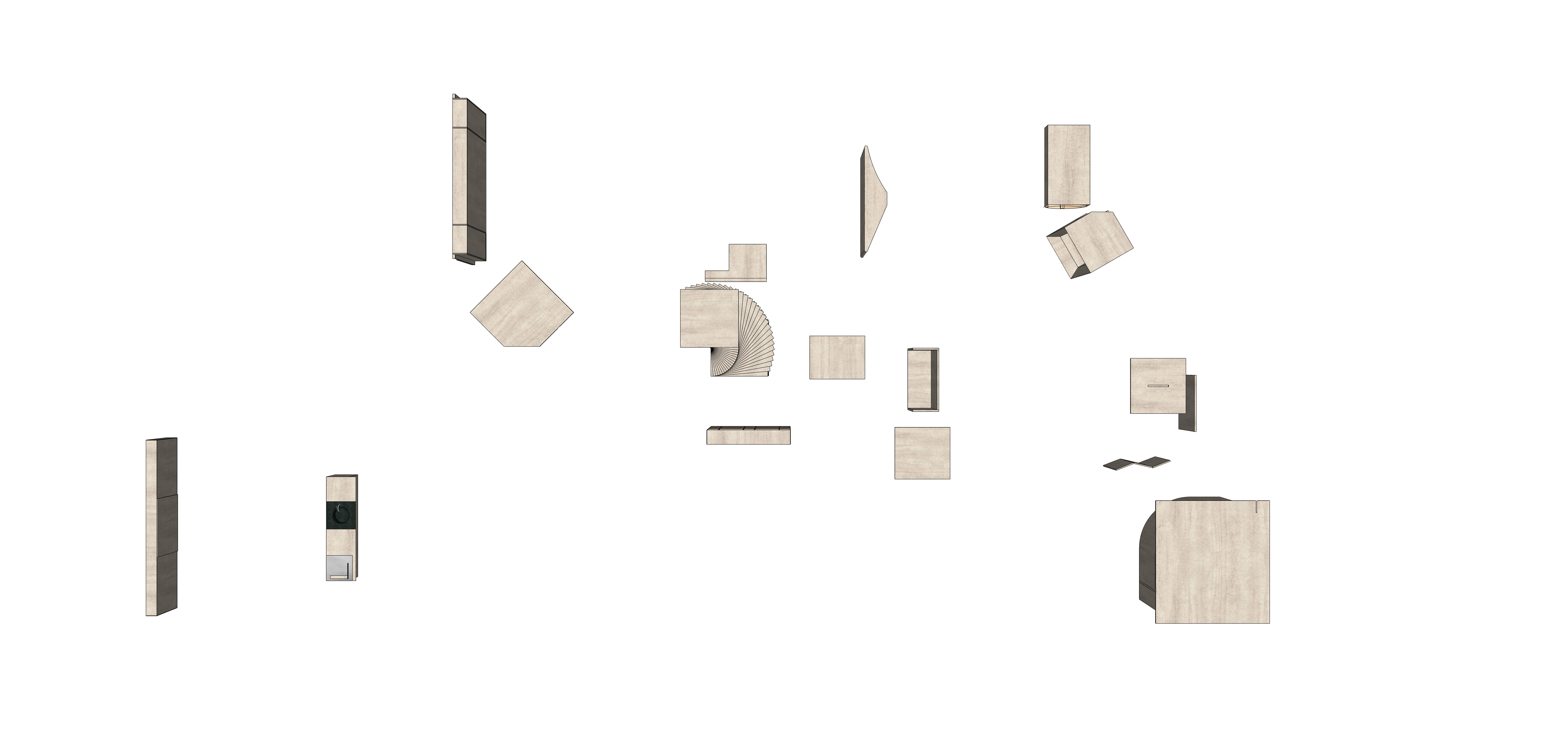
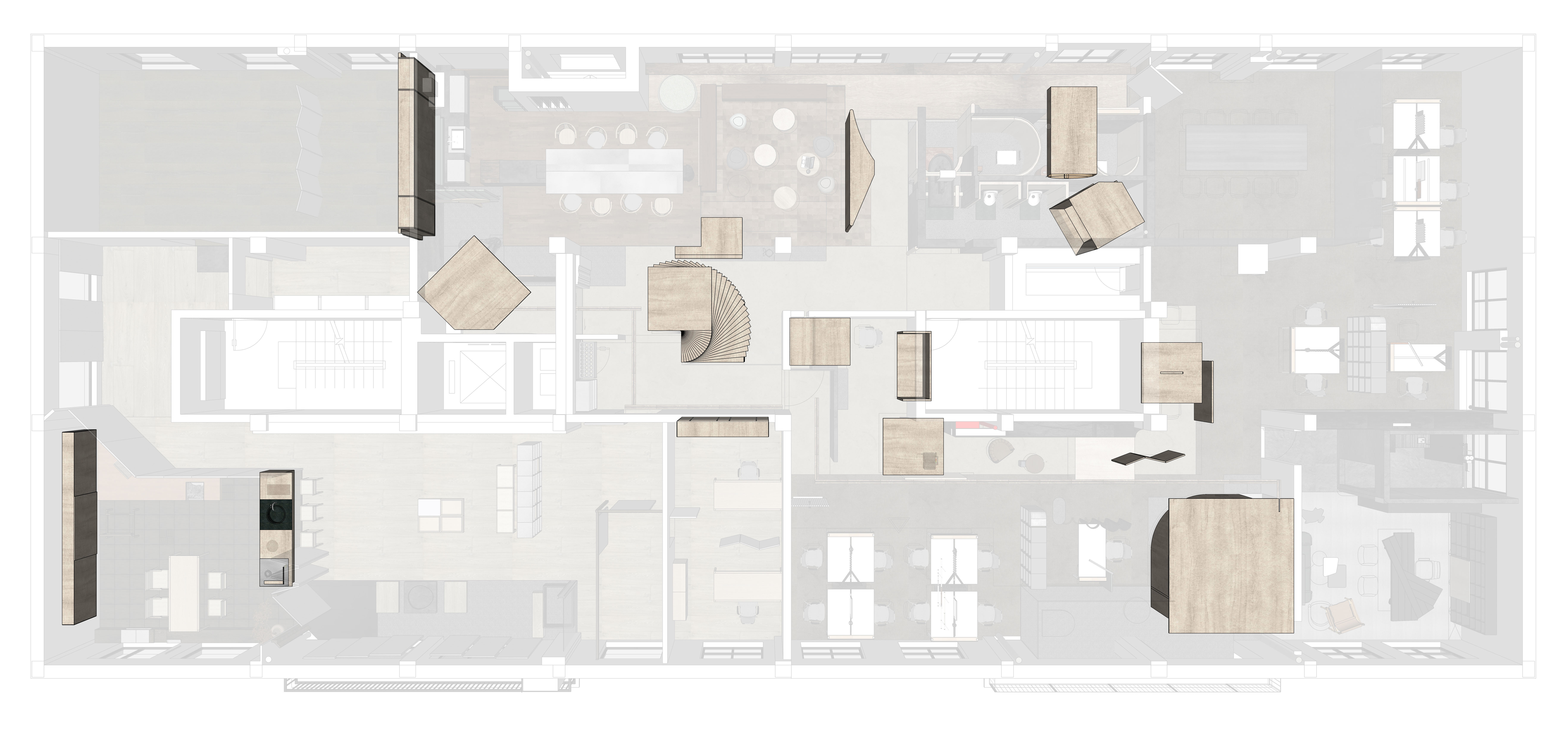

从一期到二期:延续的枫木装置与新增的屏风

Space design between screens
屏风是中国传统文化中的常见意象,与空间概念紧密相关。“屏”有遮挡之义,划分和阻隔空间是其基本功能。除此之外,屏风还是一种绘画媒材,与手卷同为古老的绘画形制,其本身亦可作为绘画图像,在表现人物的场景时,提供了另一个“绘画平面”,借以反映人物内心的世界。
Screens are very common in traditional Chinese culture and are closely related to "space". The word "screen" has the meaning of occlusion in Chinese, and its basic function is to divide and block space. The traditional Chinese screen is also a painting medium, which is the same ancient painting form as the hand scroll. IThe screen itself is also an image element. In a picture with a human figure, it provides a "flat image" that reflects the inner world of the person in the painting.
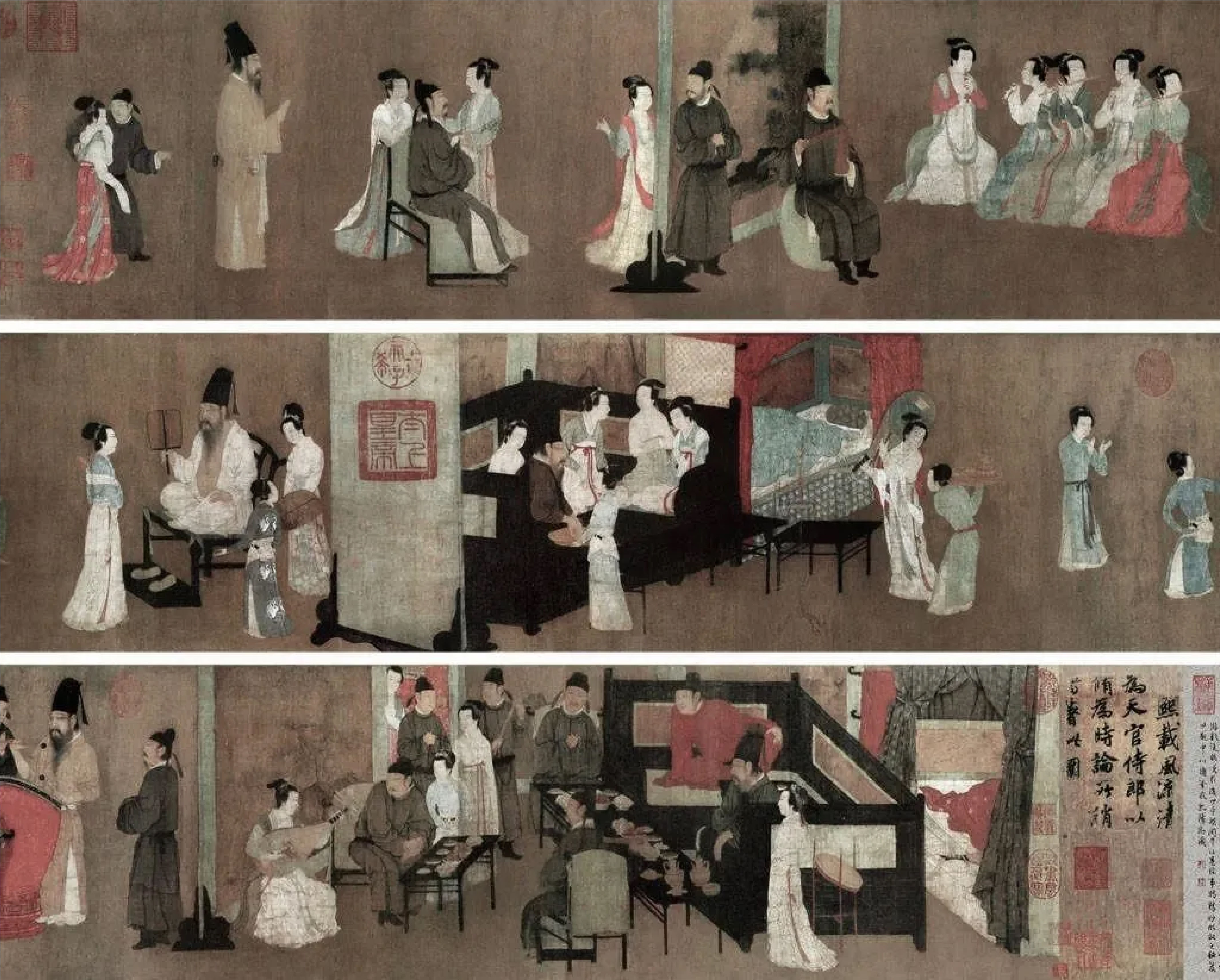
《韩熙载夜宴图》局部,图片来源于网络
于是在这满是玻璃窗的现代建筑里,我们尝试引入了这一有着“多重空间表现”的古老物件,通过边框,纹样,开合方式,以及艺术家的感受(画作),与实时变化的光影和气象,和合成多个感官交织的场景,让参与者有时也体验境我两不分的错觉。
Therefore, in this modern building full of glass windows, we try to put this ancient thing with "multiple spatial expressions" into it, and through its borders, patterns, openings and closings, as well as the artist's paintings, combined with real-time changes of light and shadow and weather, we create a scene intertwined with multiple senses, so that the people in the space sometimes experience the illusion that the environment and the self are inseparable.
设计把空间中用到的屏风做了三种分类:作为意识索引的屏风、作为欣赏对象的屏风及作为内心世界的屏风。(调研资料:巫鸿 《重屏——中国绘画中的媒材与再现》)
We divide the screens used in space into three types: The screen that guides consciousness, the screen for viewing, and the screen that reflects the inner world(Reference: The Double Screen: Medium and Representation in Chinese Painting, Wu Hung.)
作为意识索引的屏风
The screen that guides consciousness
作为准建筑形式,它始终成为人们意识的索引:在屏风后面可能意味着不被允许, 屏风的延伸边界也可能比墙的实体边界更有领域感。在这样的索引下,屏风指引着人们用意识把空间转换成了地点。
As a quasi-architectural form, the screen has always been an index of consciousness: the area behind thescreen may mean that it is not allowed to be reachedand the virtual boundary extending from the screen may also be more territorial than the physical boundary of the wall. Under such an index, people consciously transform the overall space into specific places.
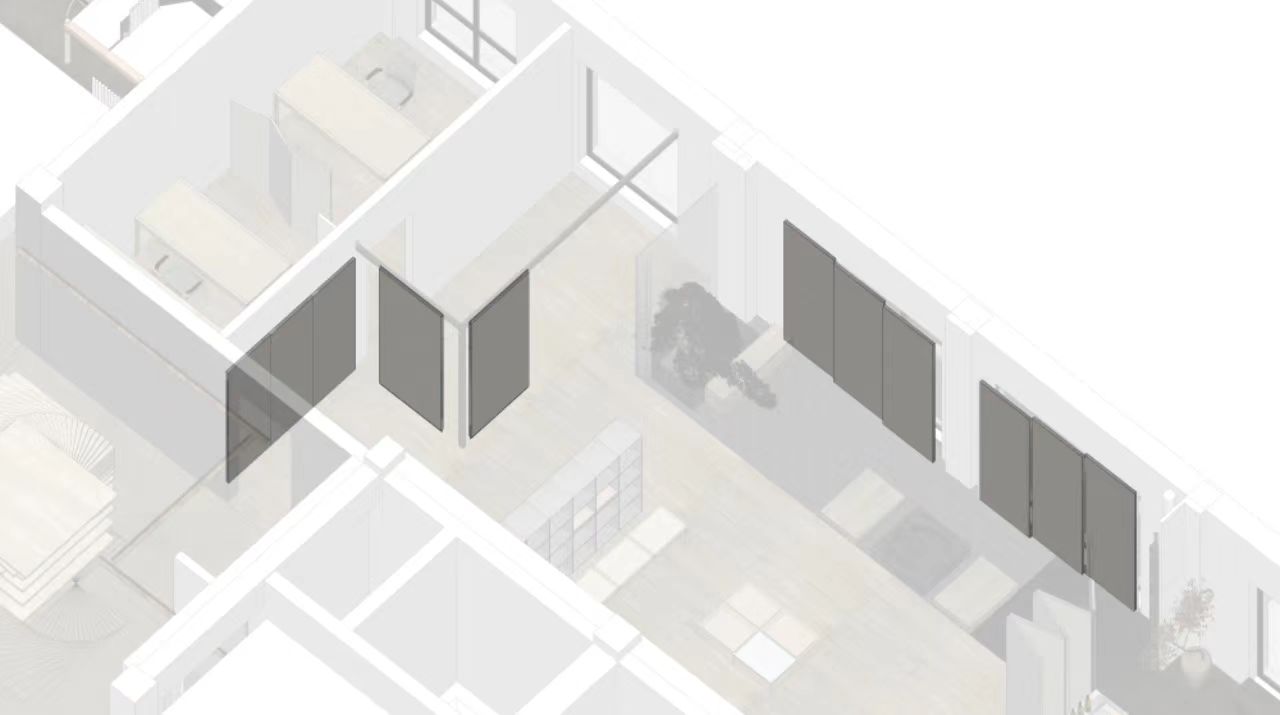

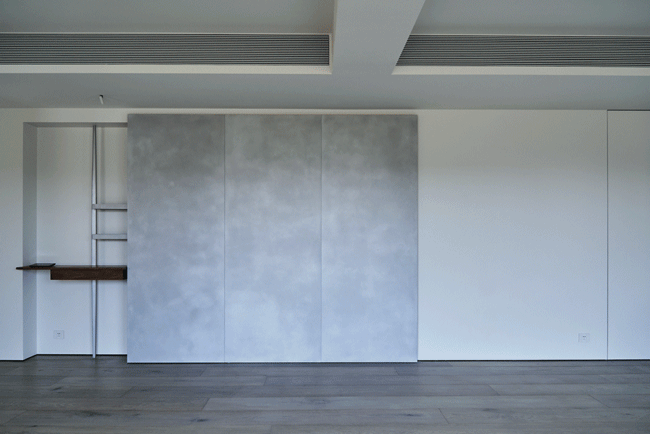
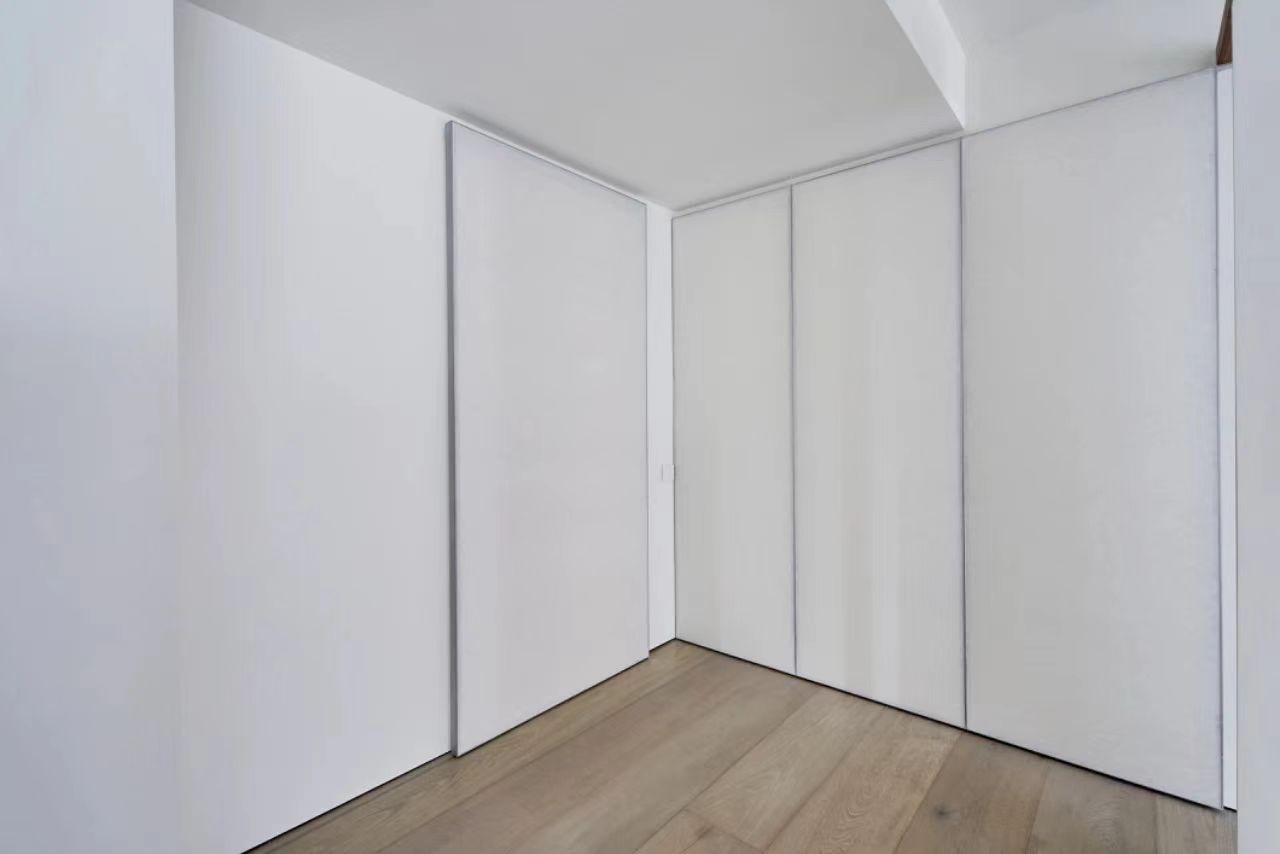
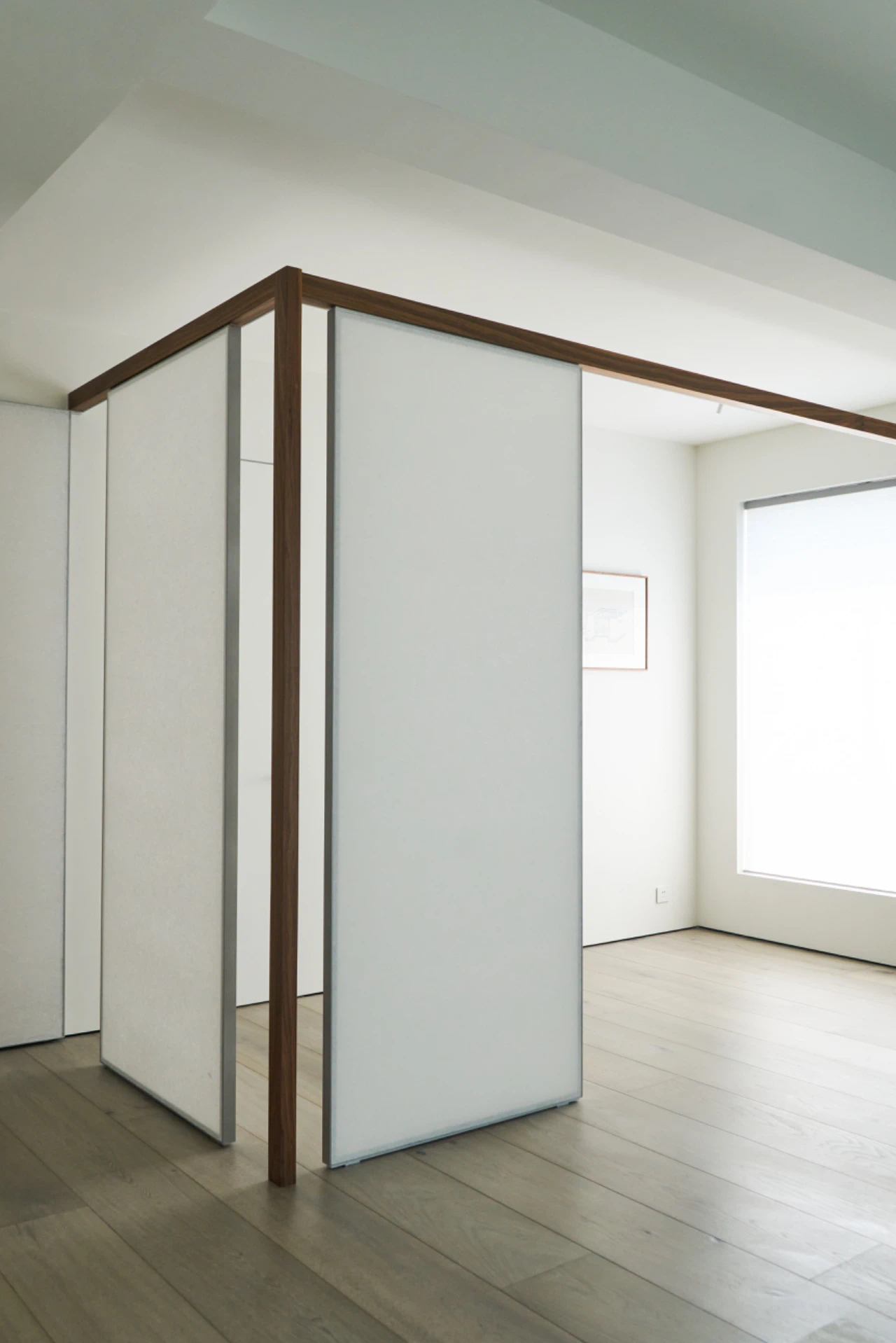
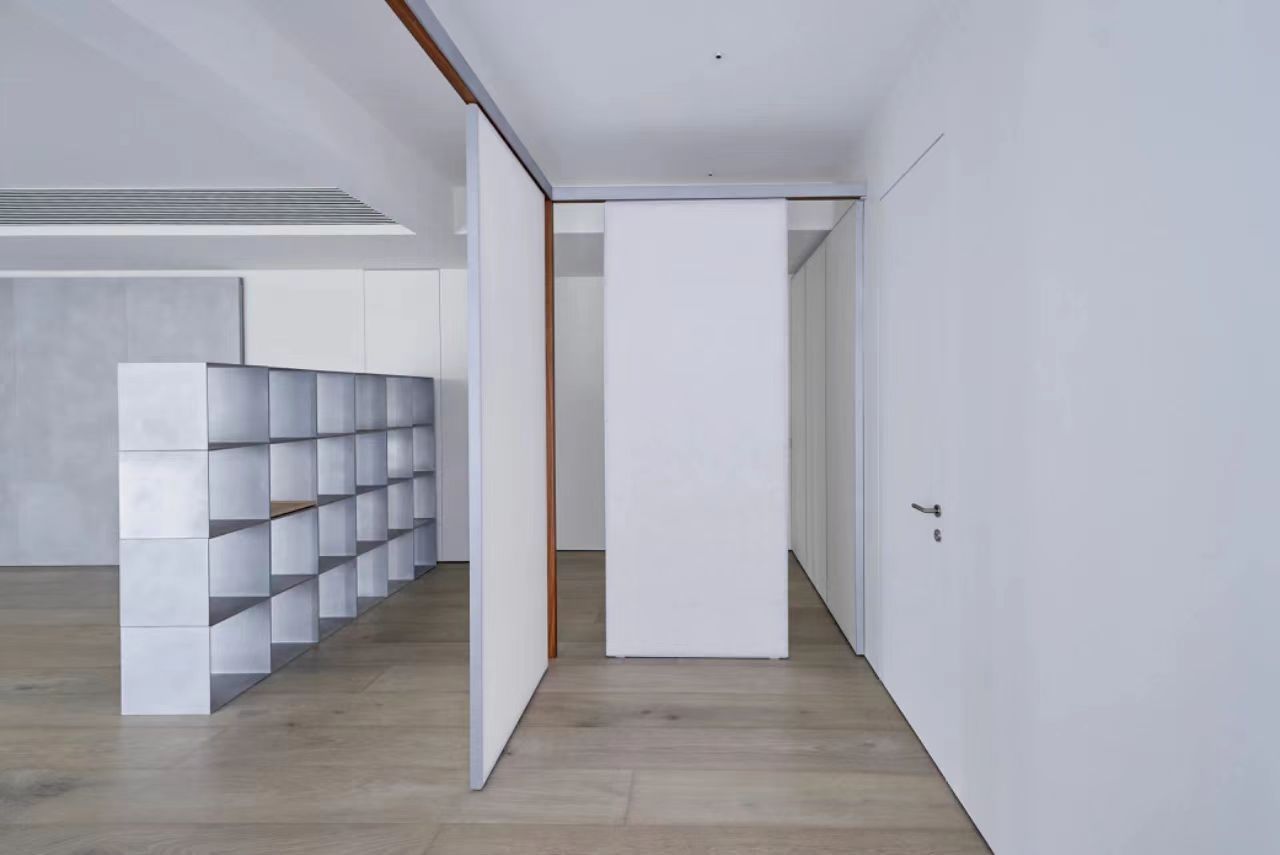
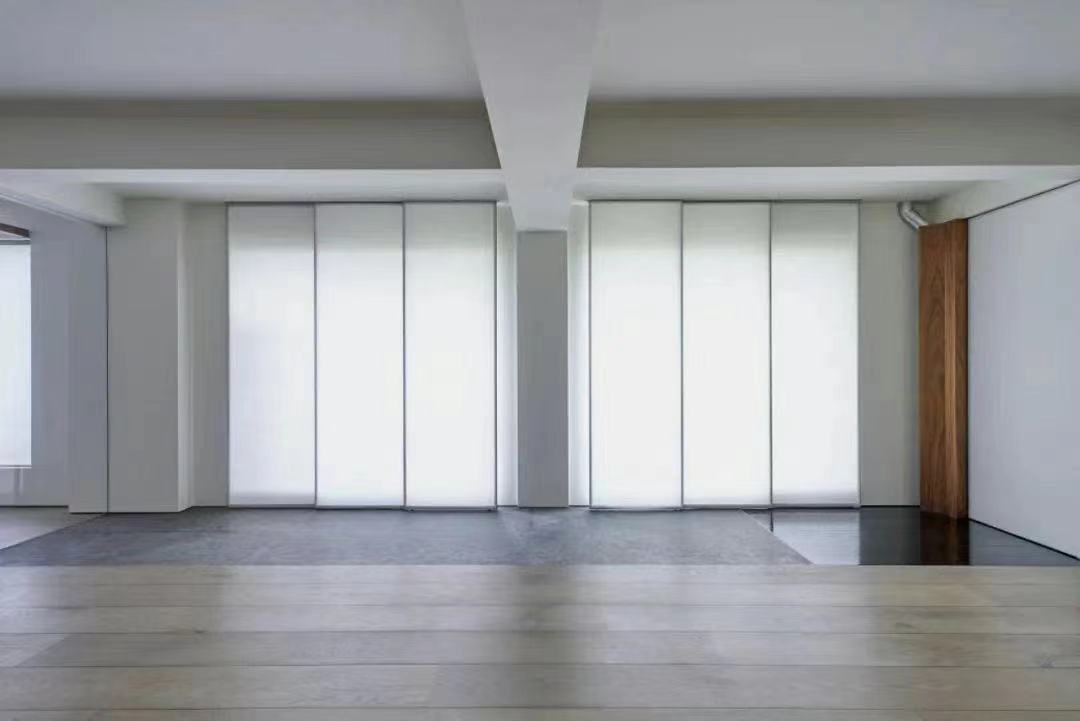

入口玄关到客厅的屏风


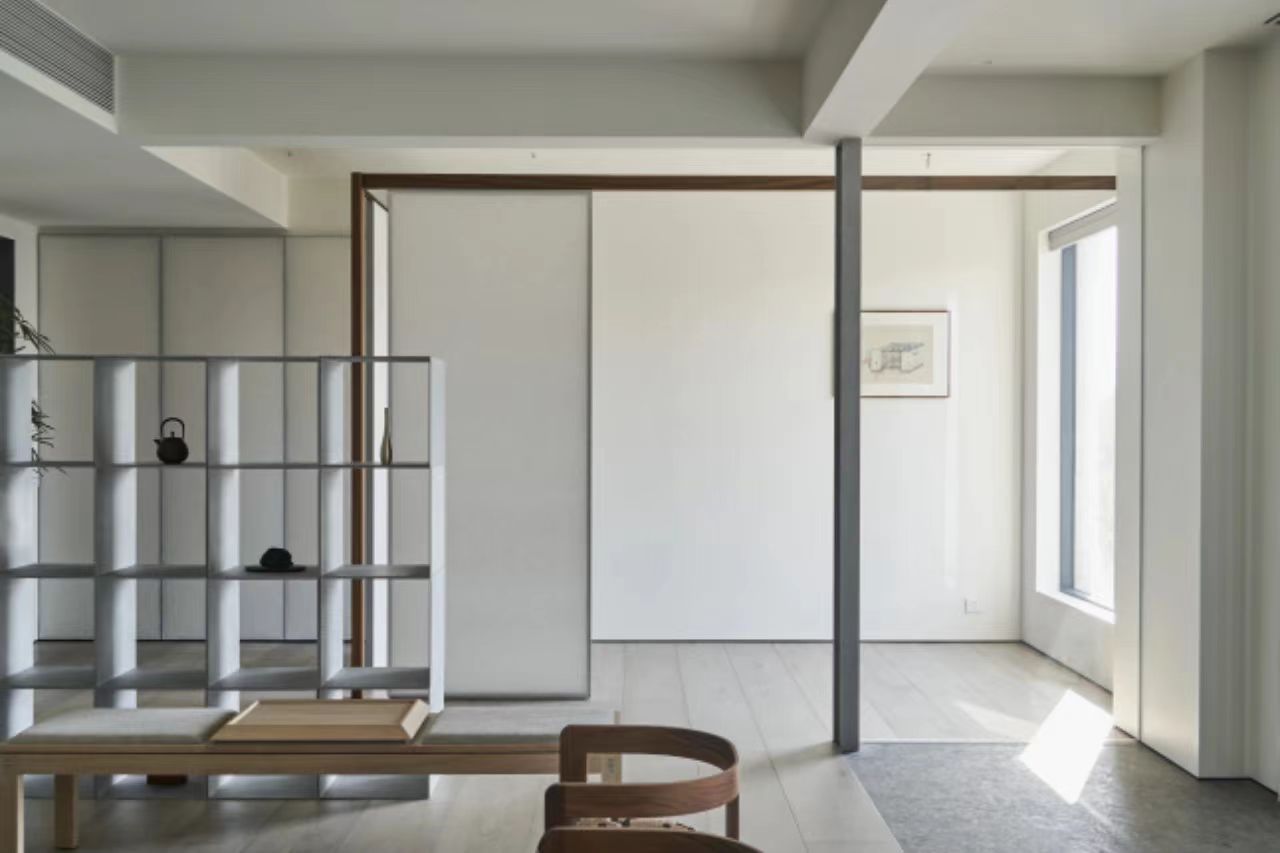

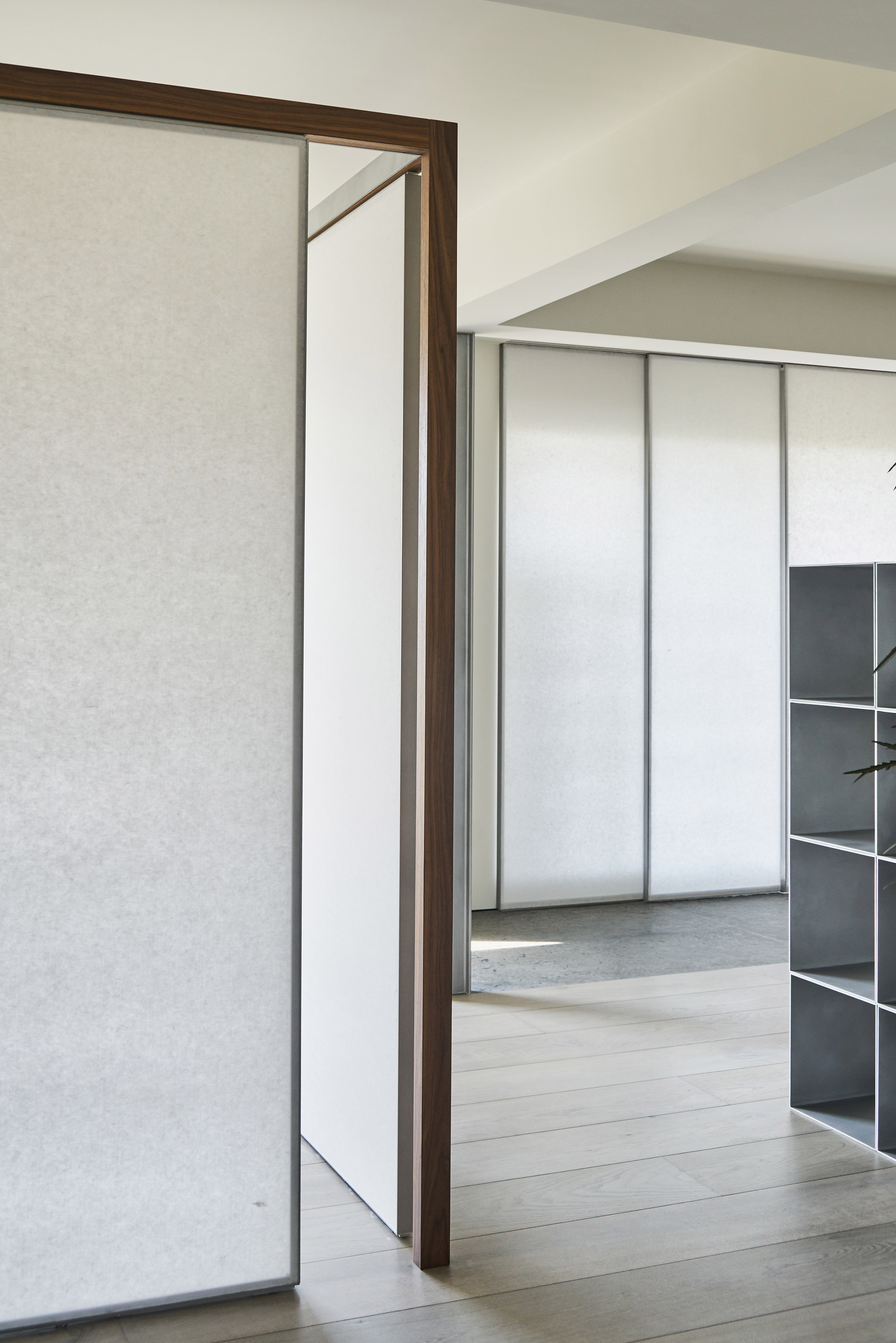
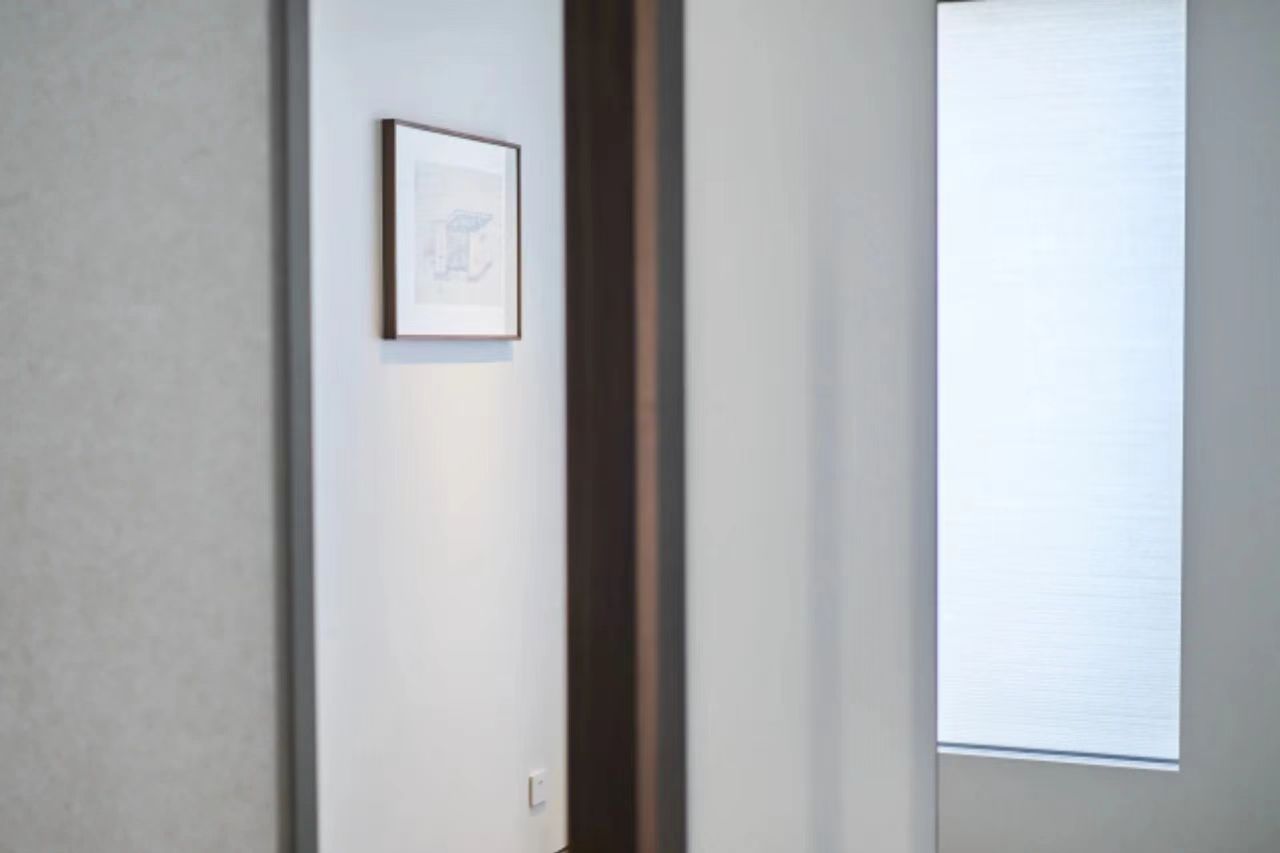
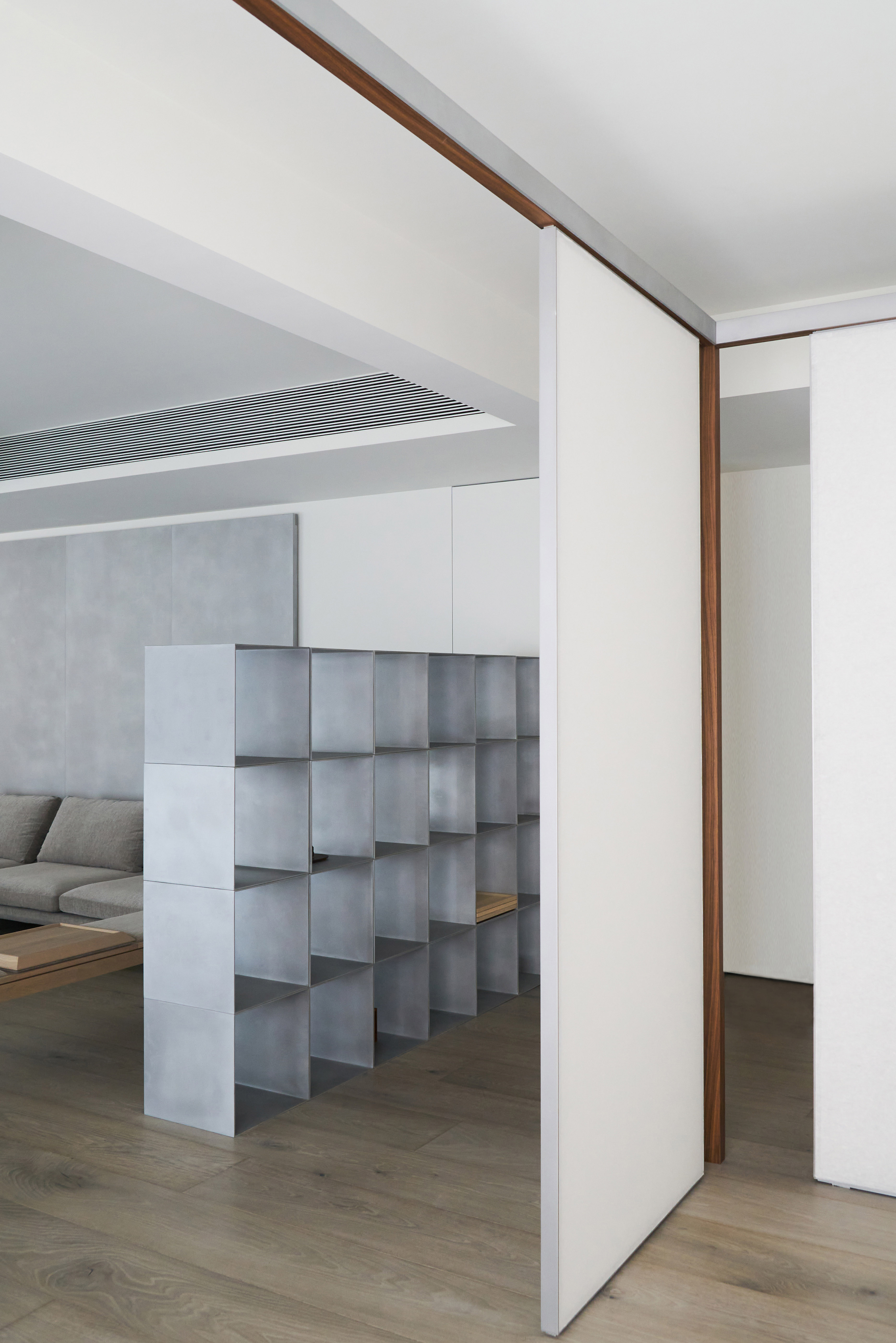
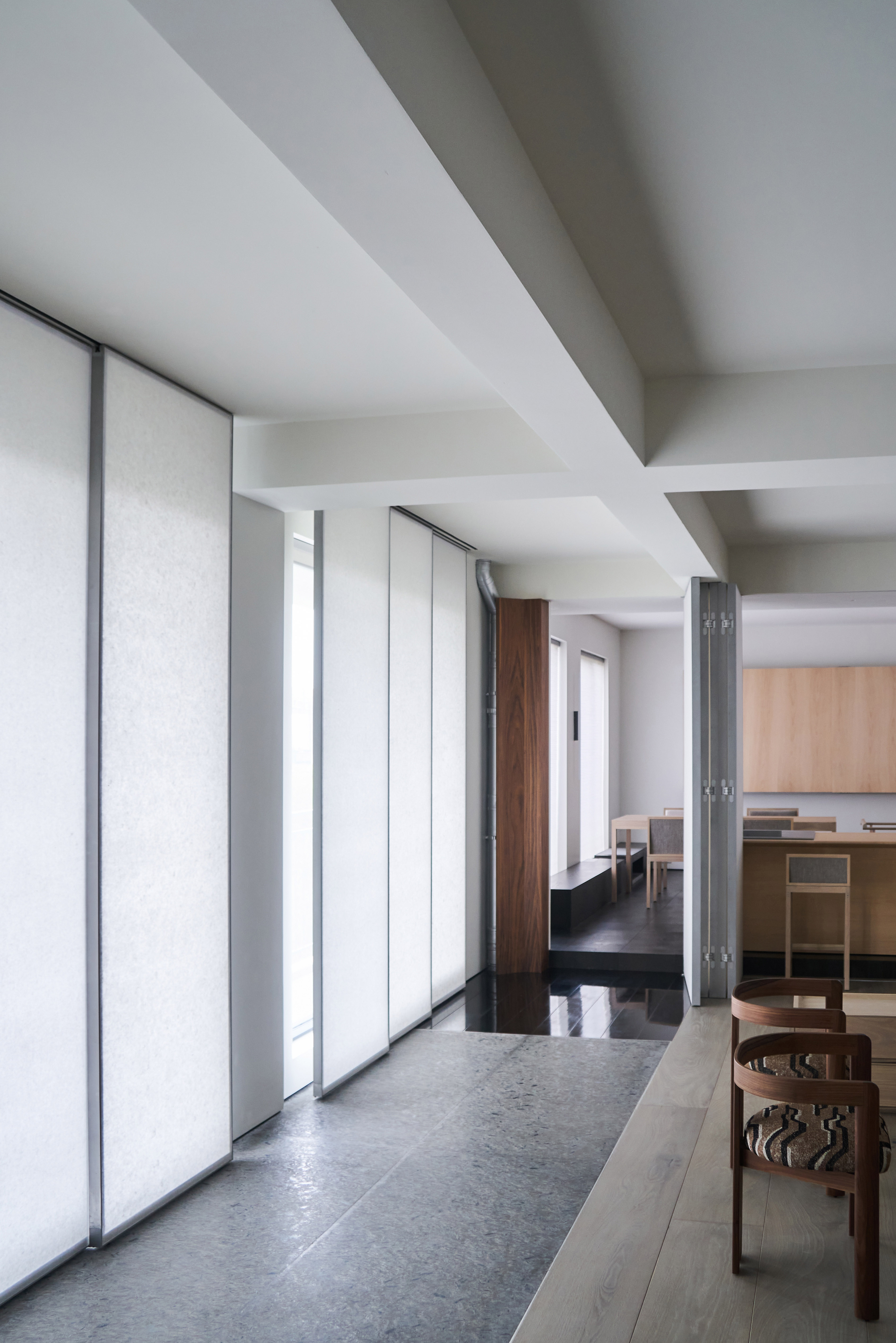
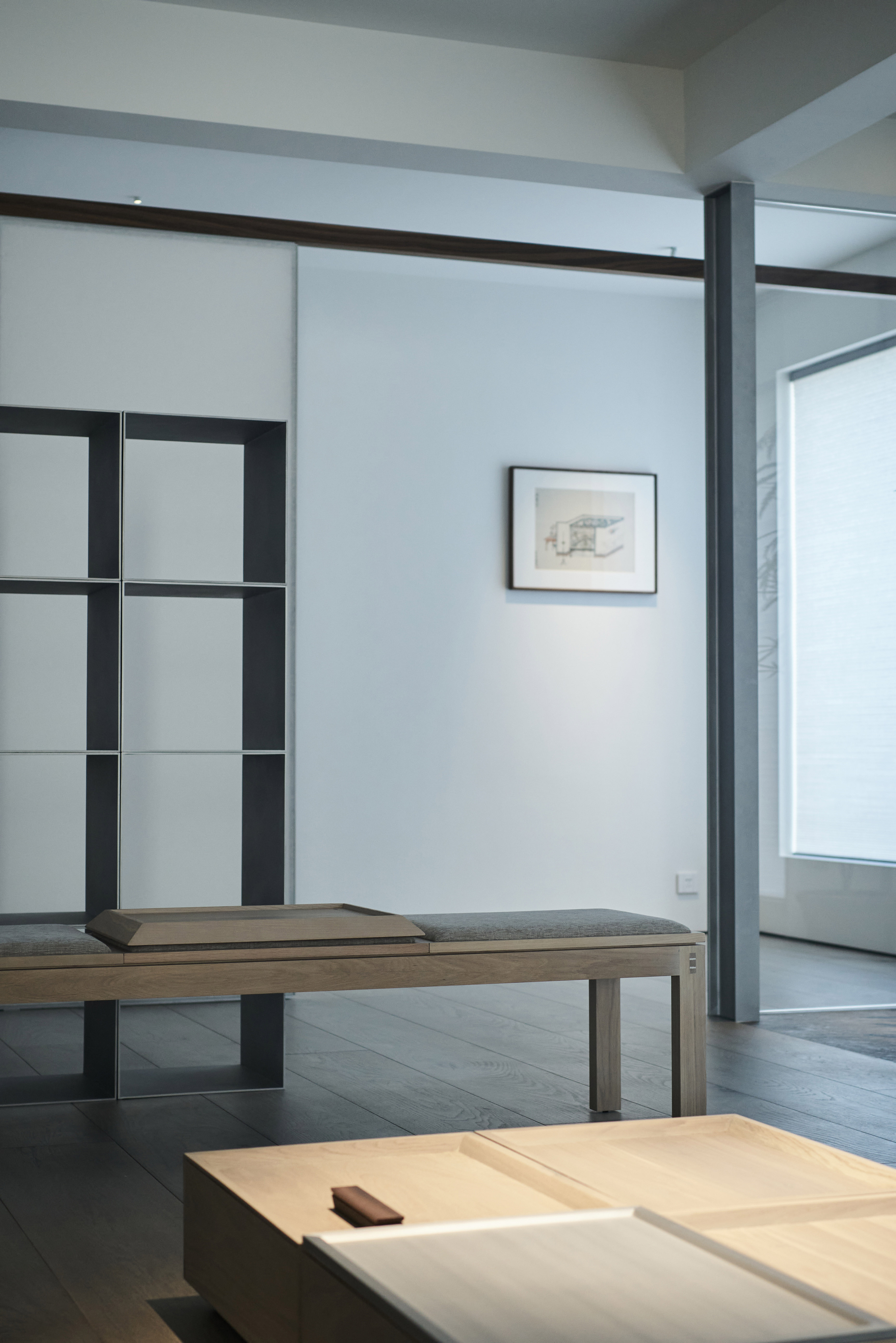
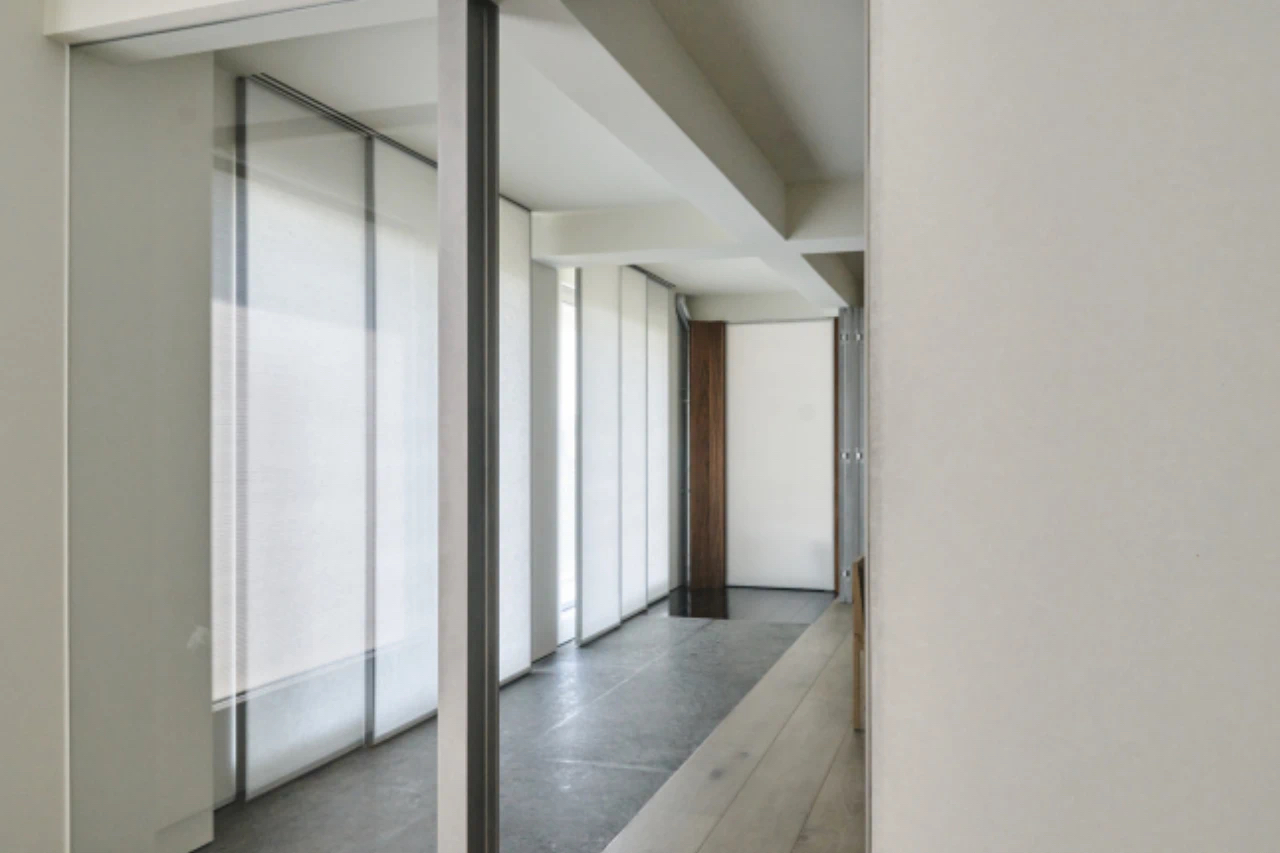
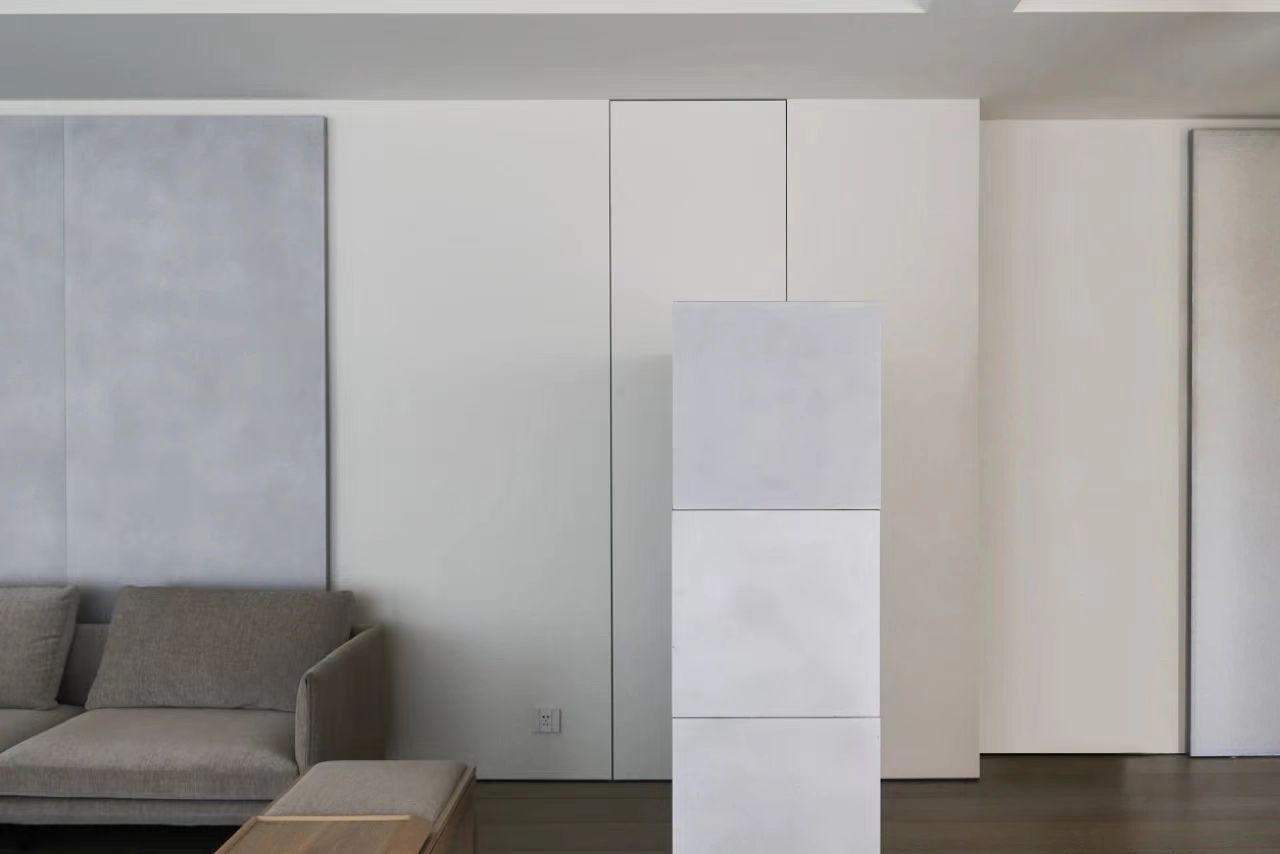
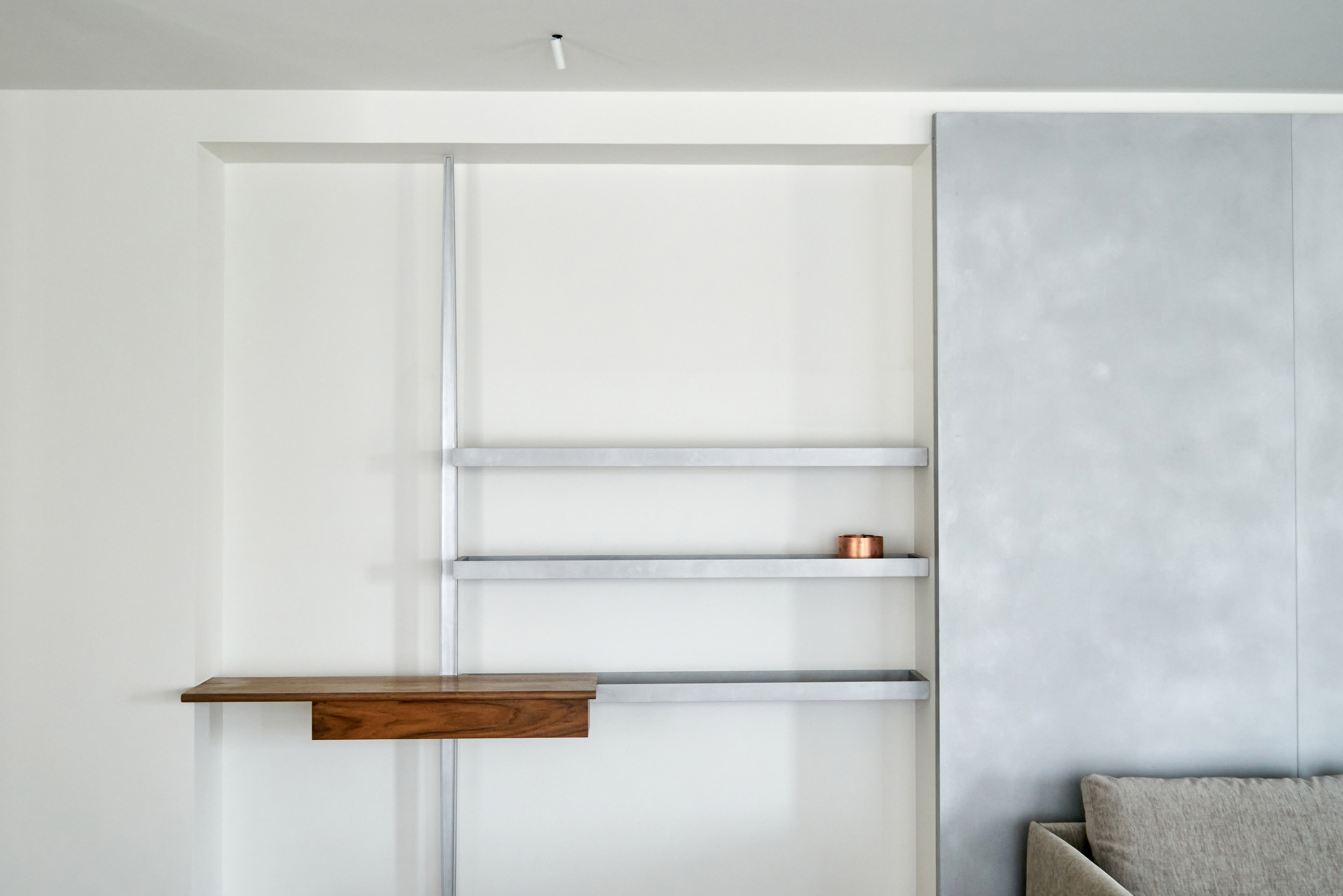
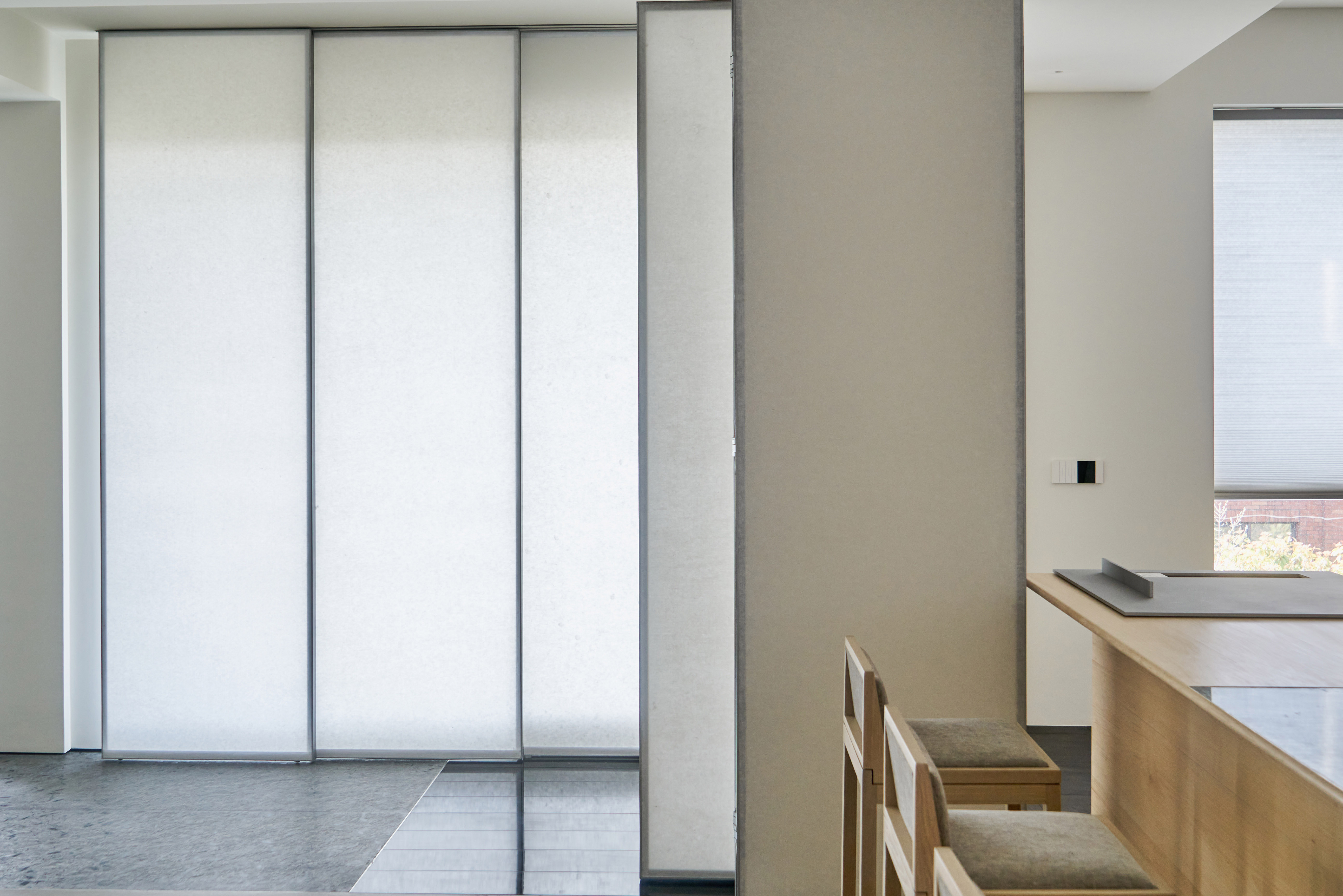








入口玄关到客厅的空间状态
作为欣赏对象的屏风
The screen for viewing
屏风有时以一个观看单元呈现,有时既分隔又连接了多个单元。模拟屏风在绘画中与家具组织出的斜形框架图,让屏风帮助构建起共时性的绘画再现与历时性的观看顺序。
The screen is sometimes presented as a single viewing unit, and sometimes it is separated into multiple connected units. By simulating the composition of screens and furniture in traditional Chinese paintings, we let the screens help reproduce the synchronic painting scene and construct a diachronic viewing sequence.

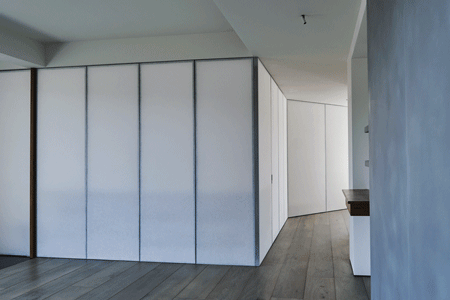
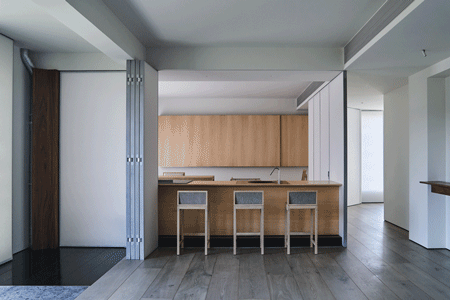
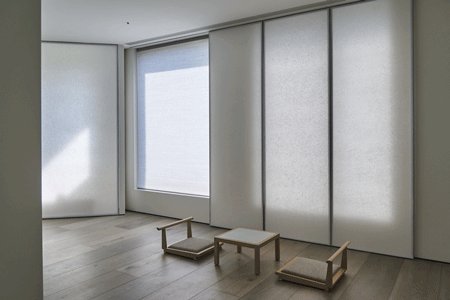
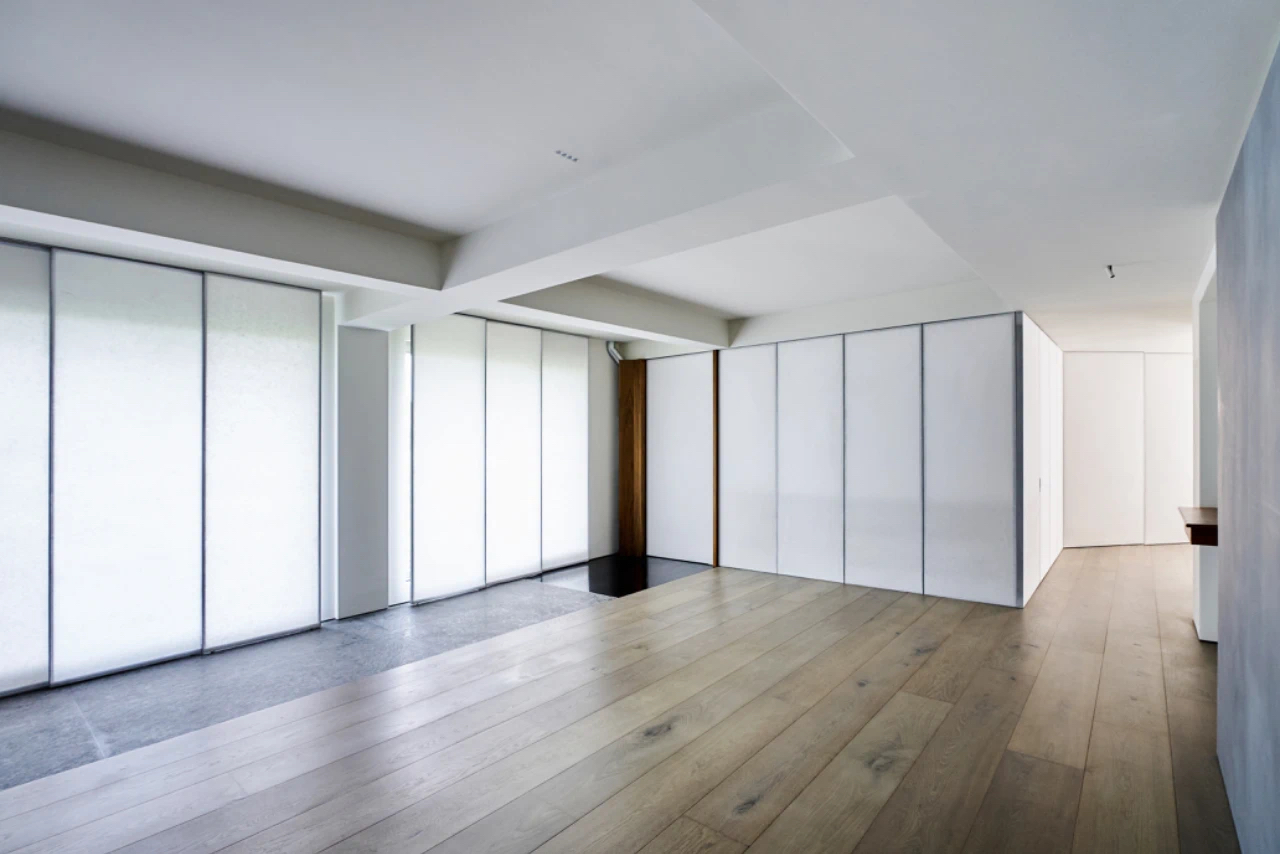




茶室到西面区域的屏风
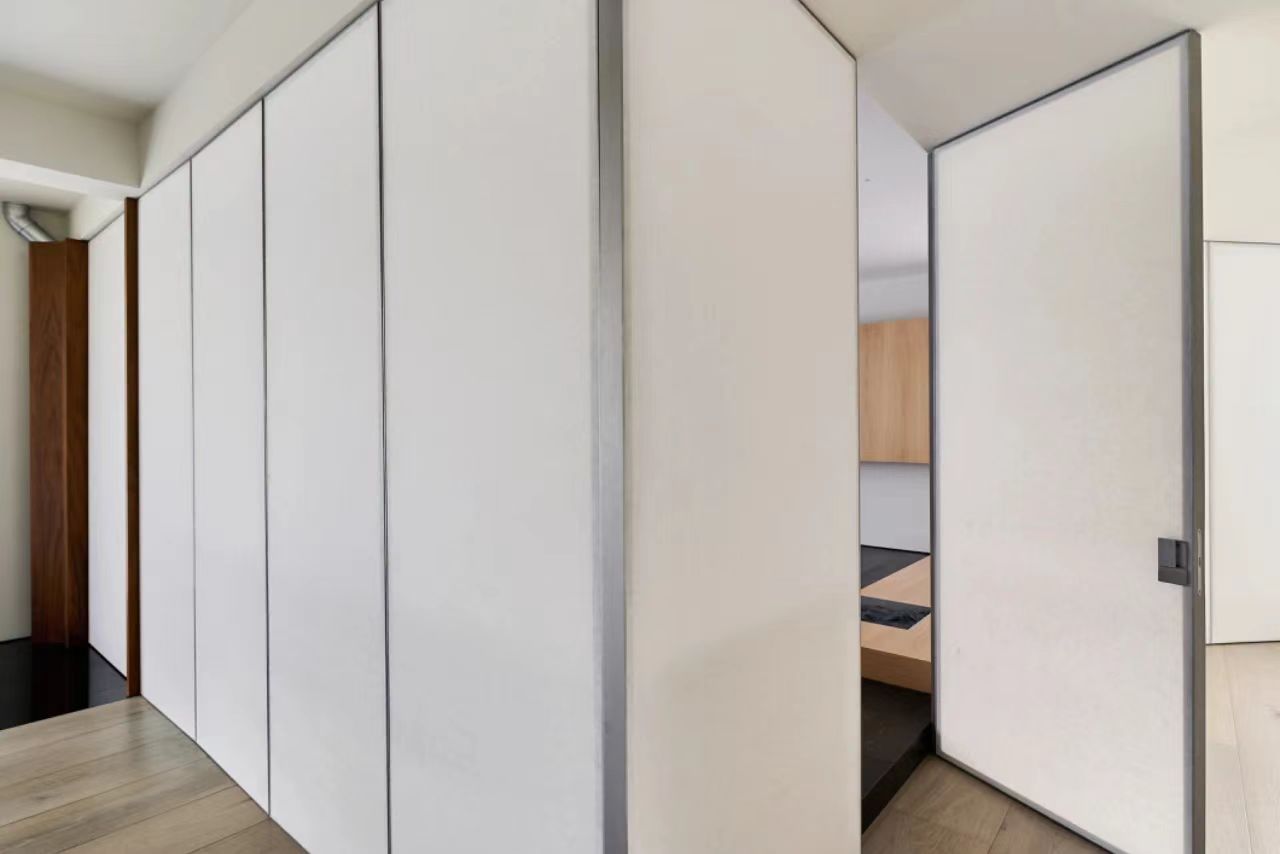
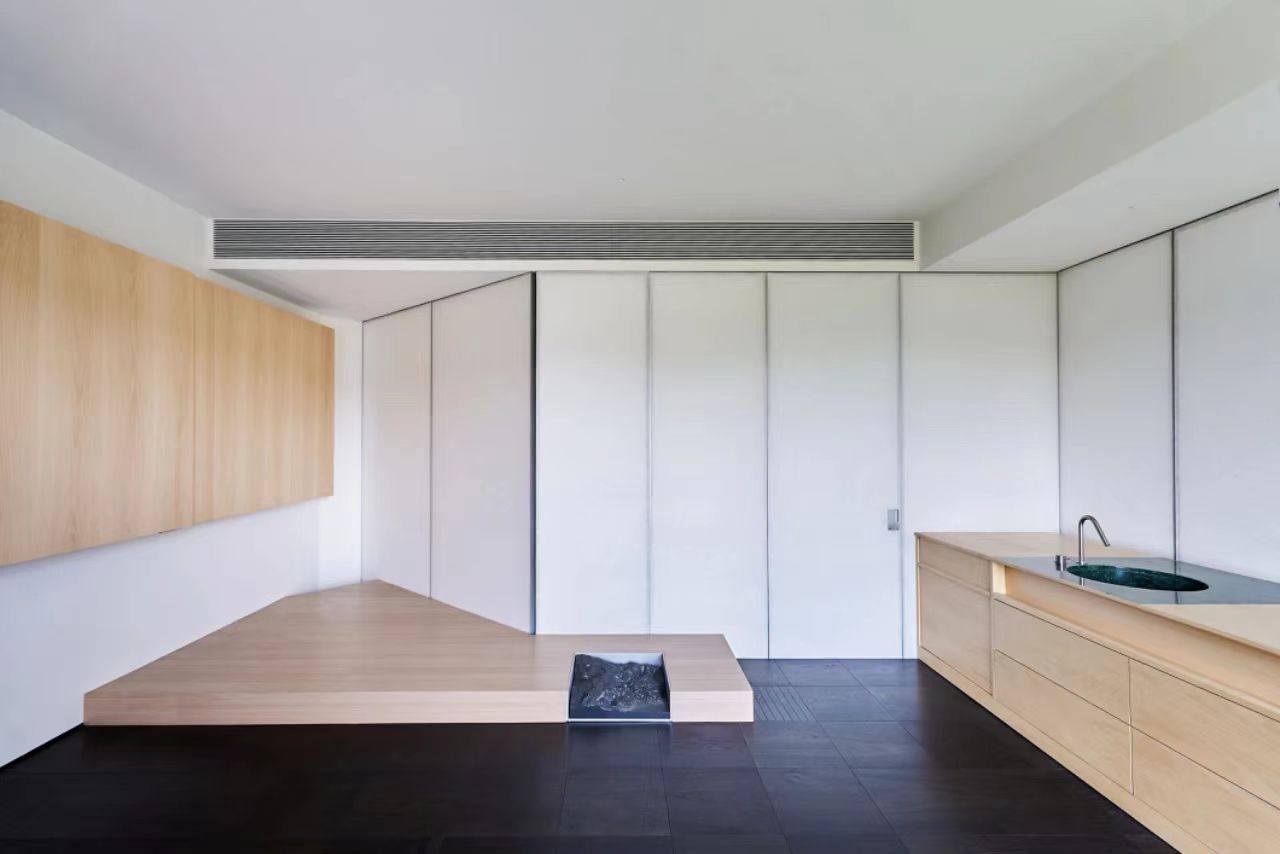
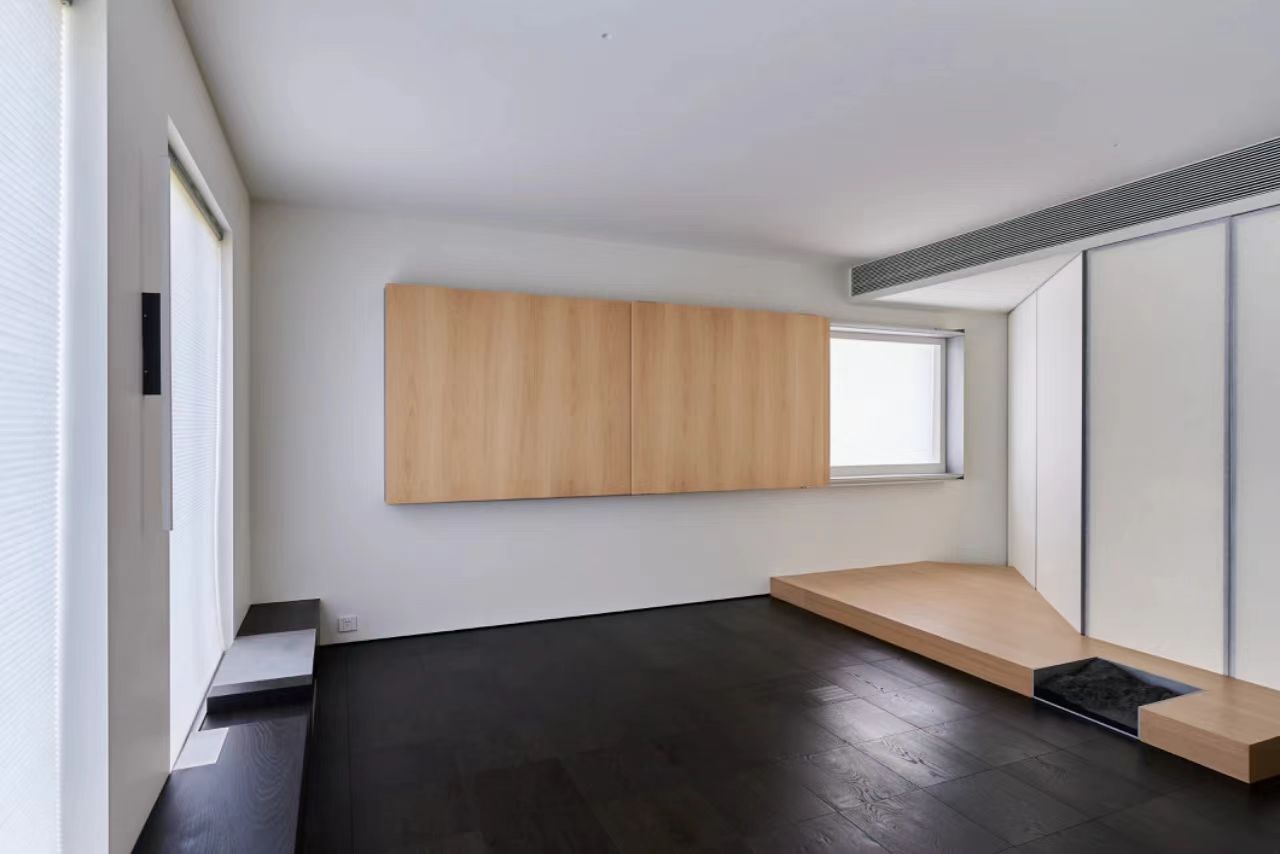
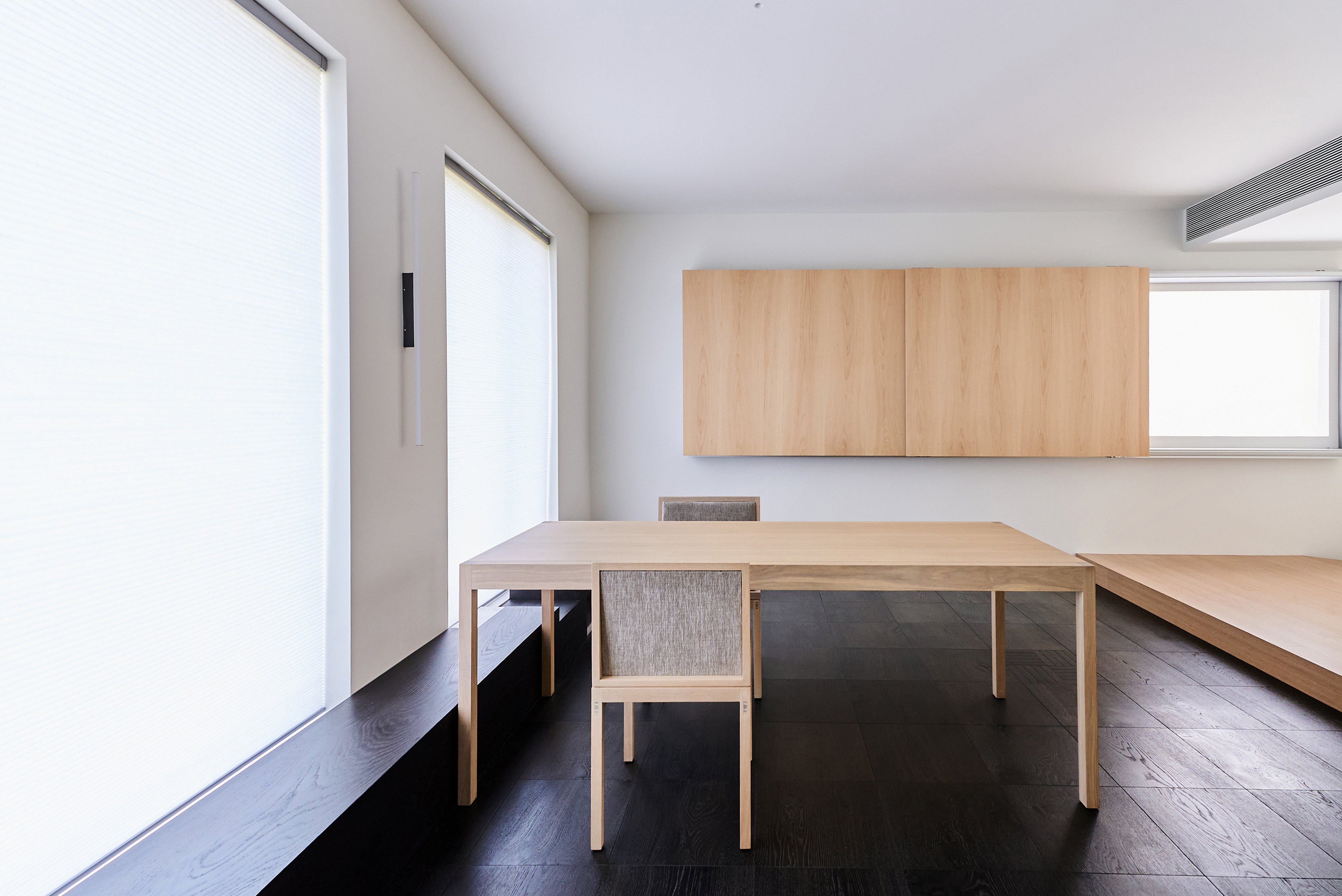
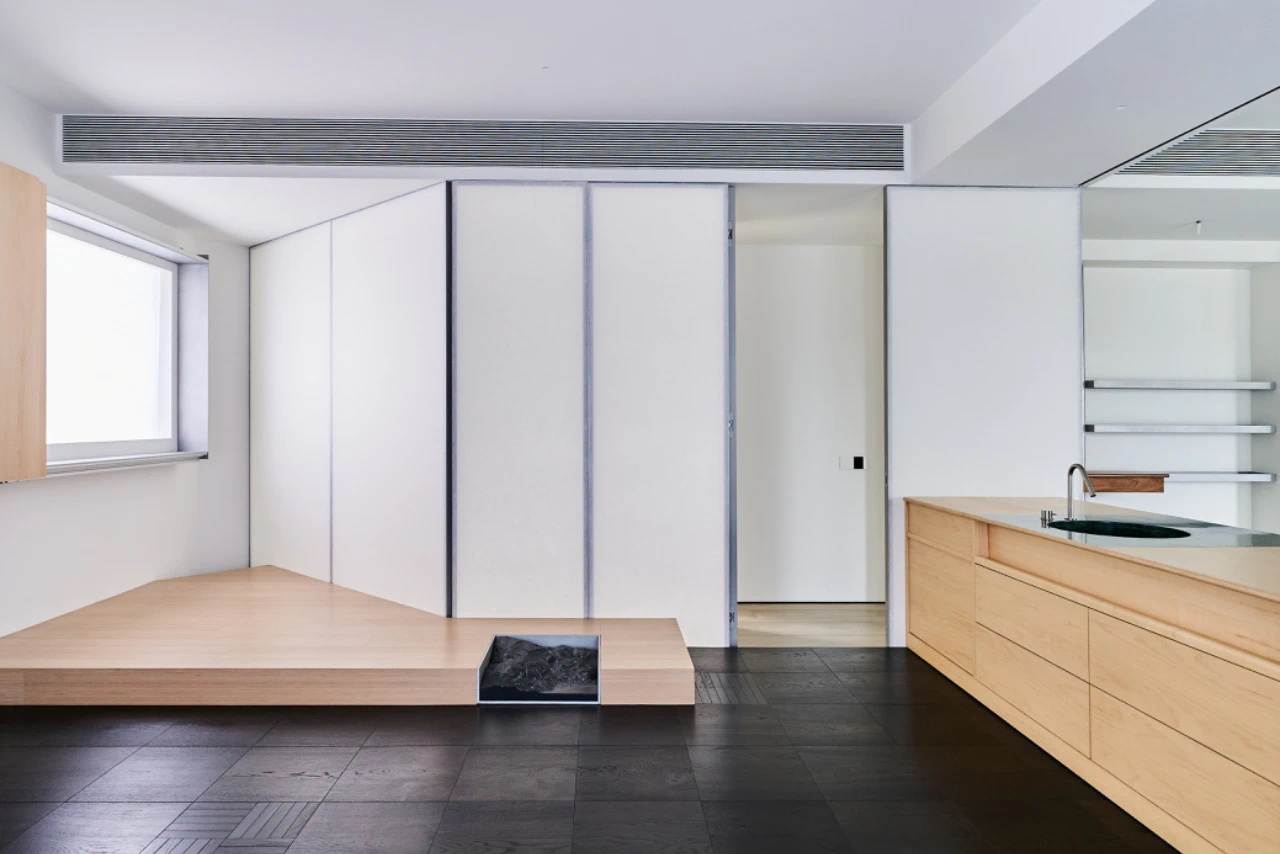
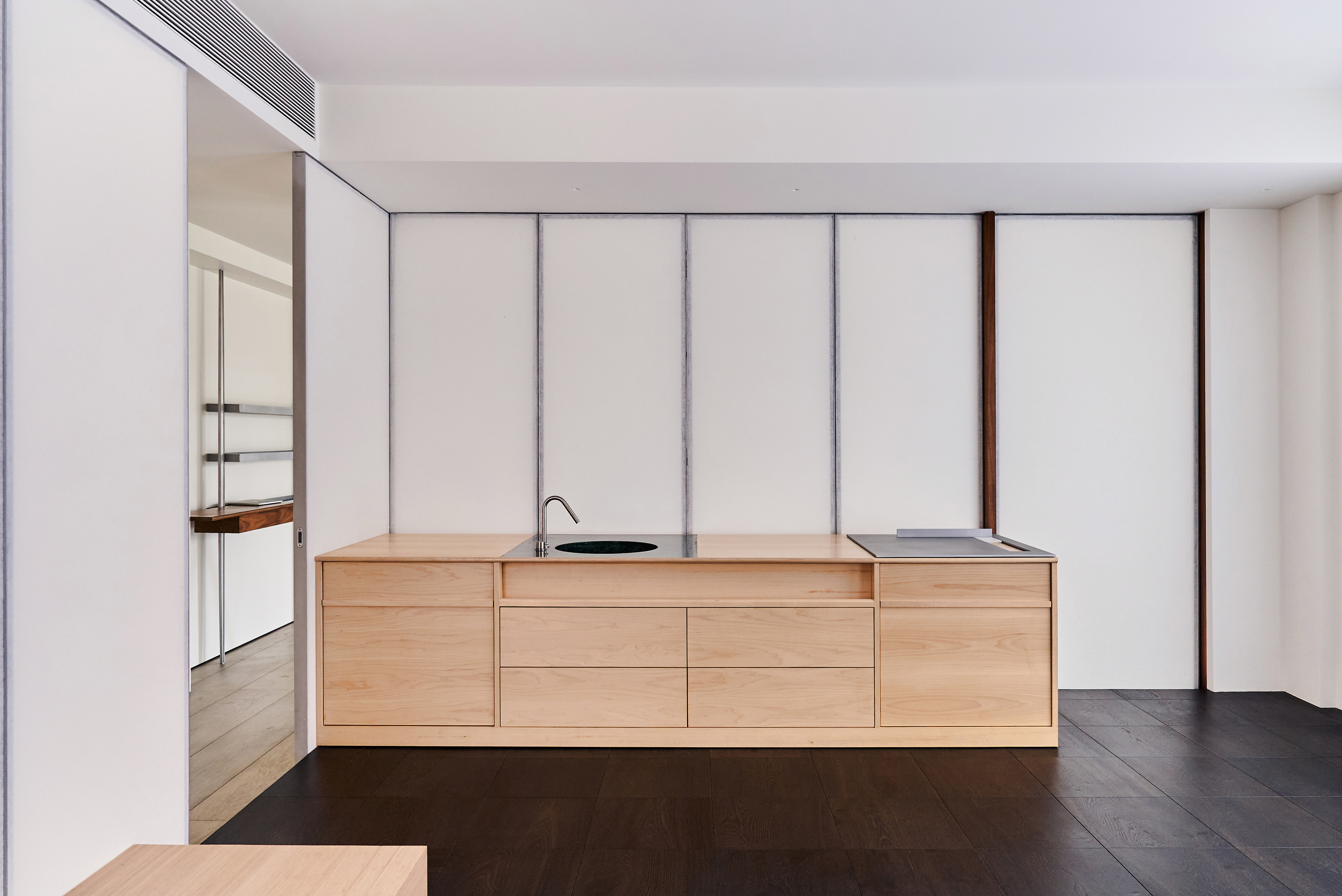


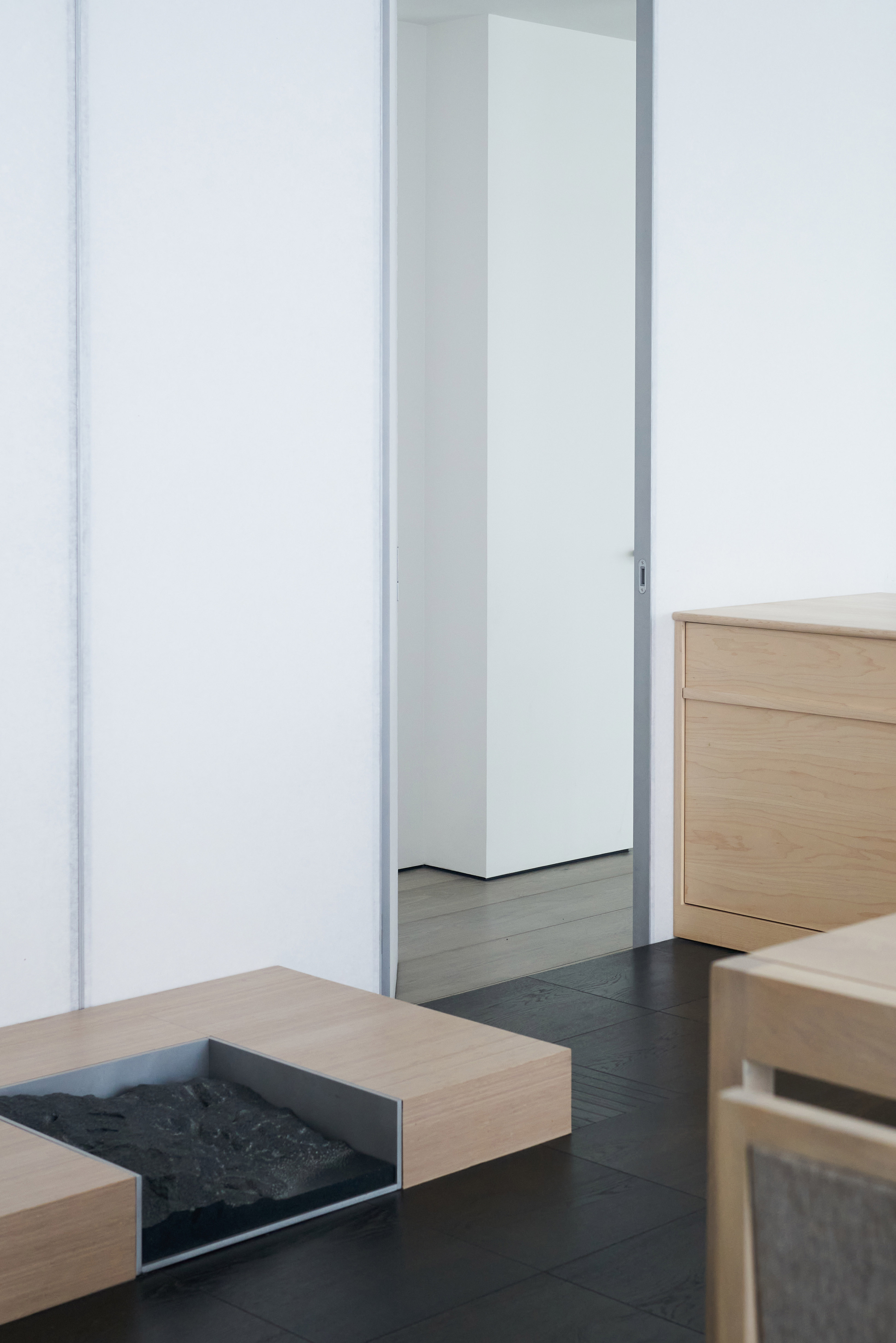
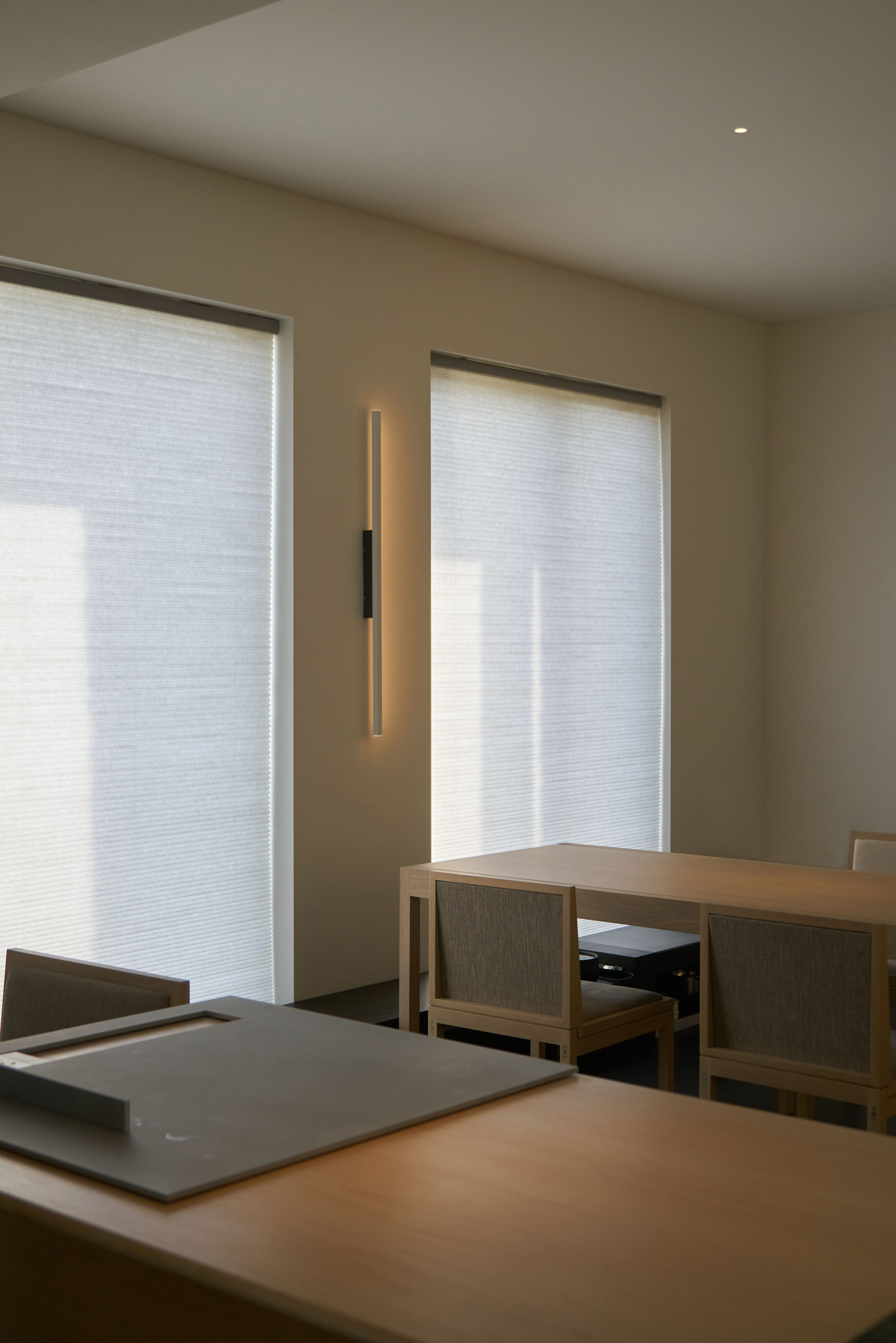
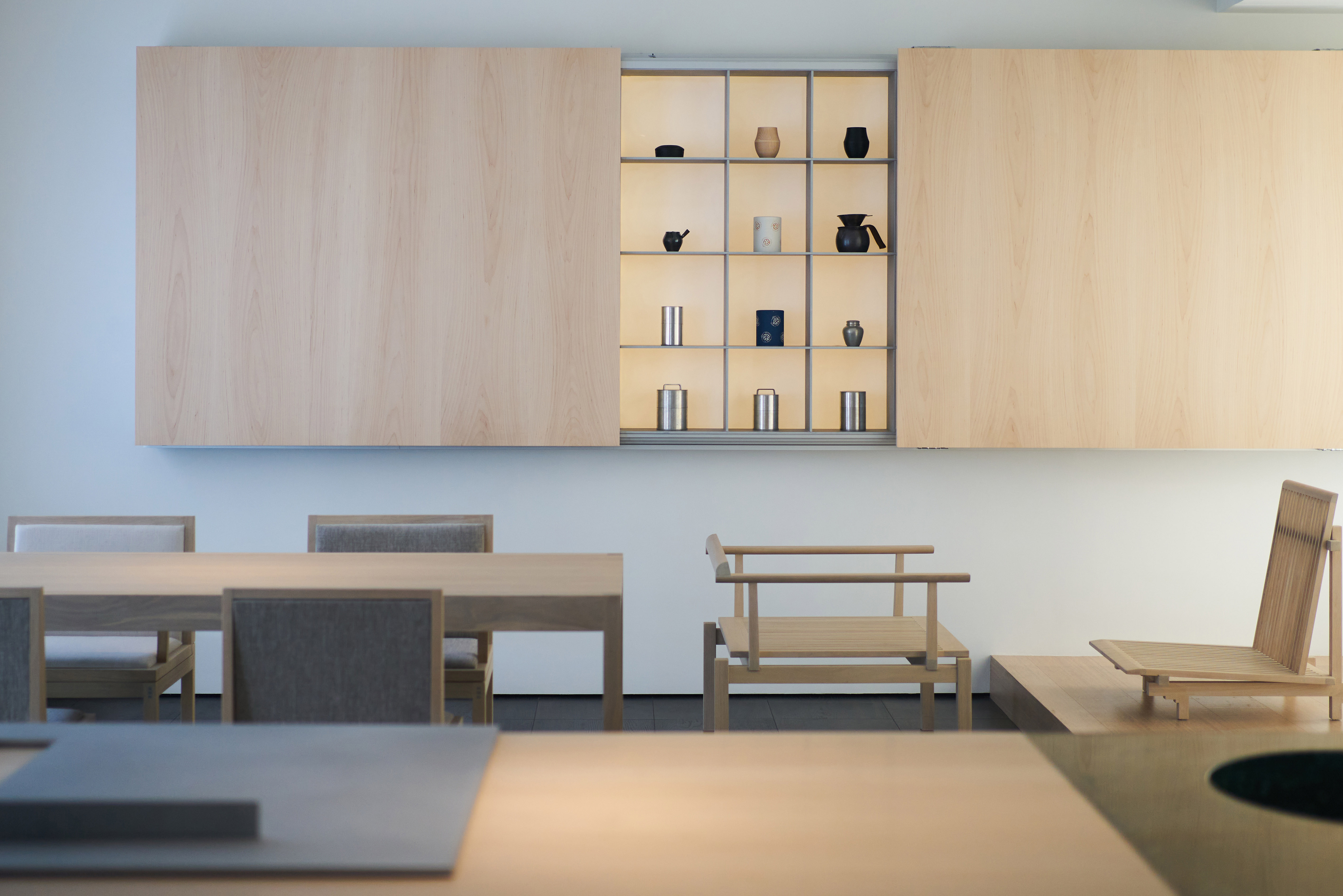
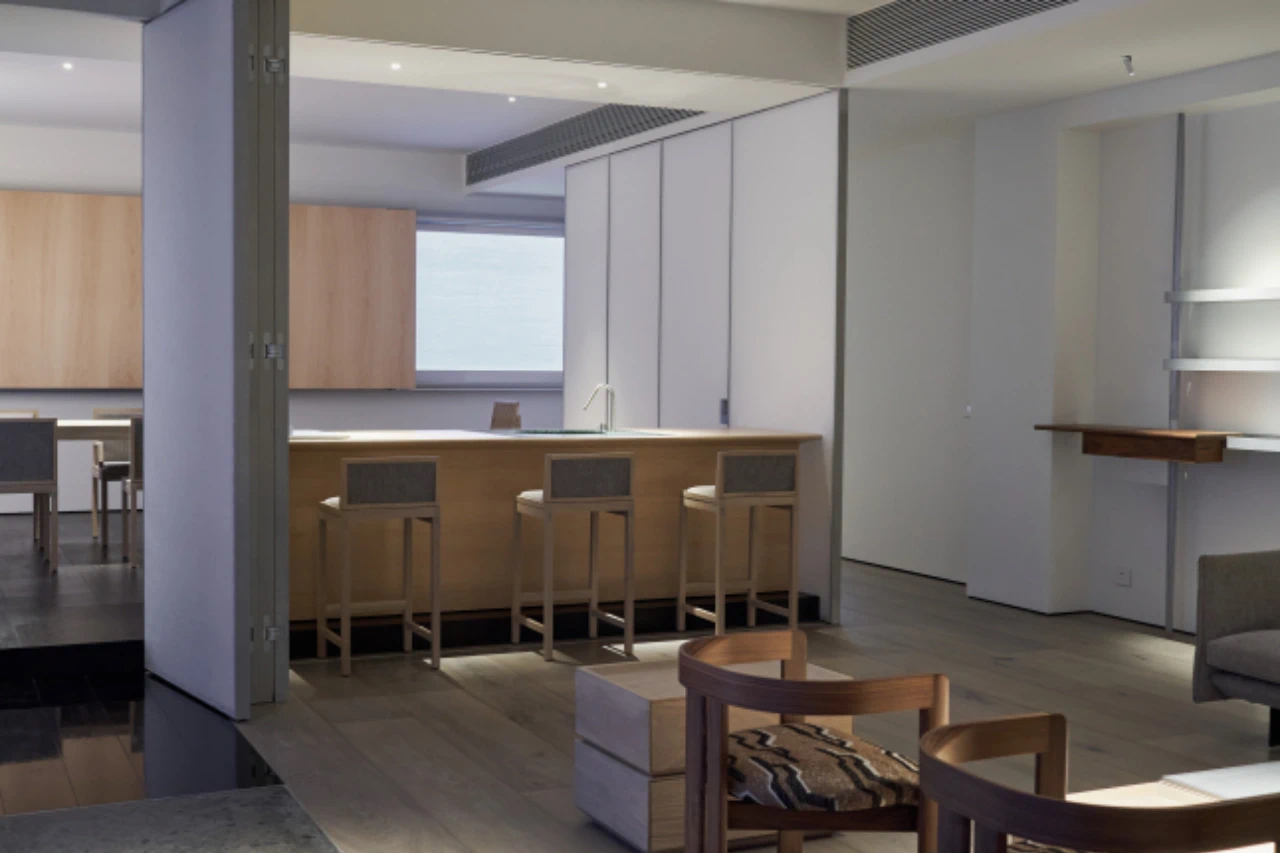


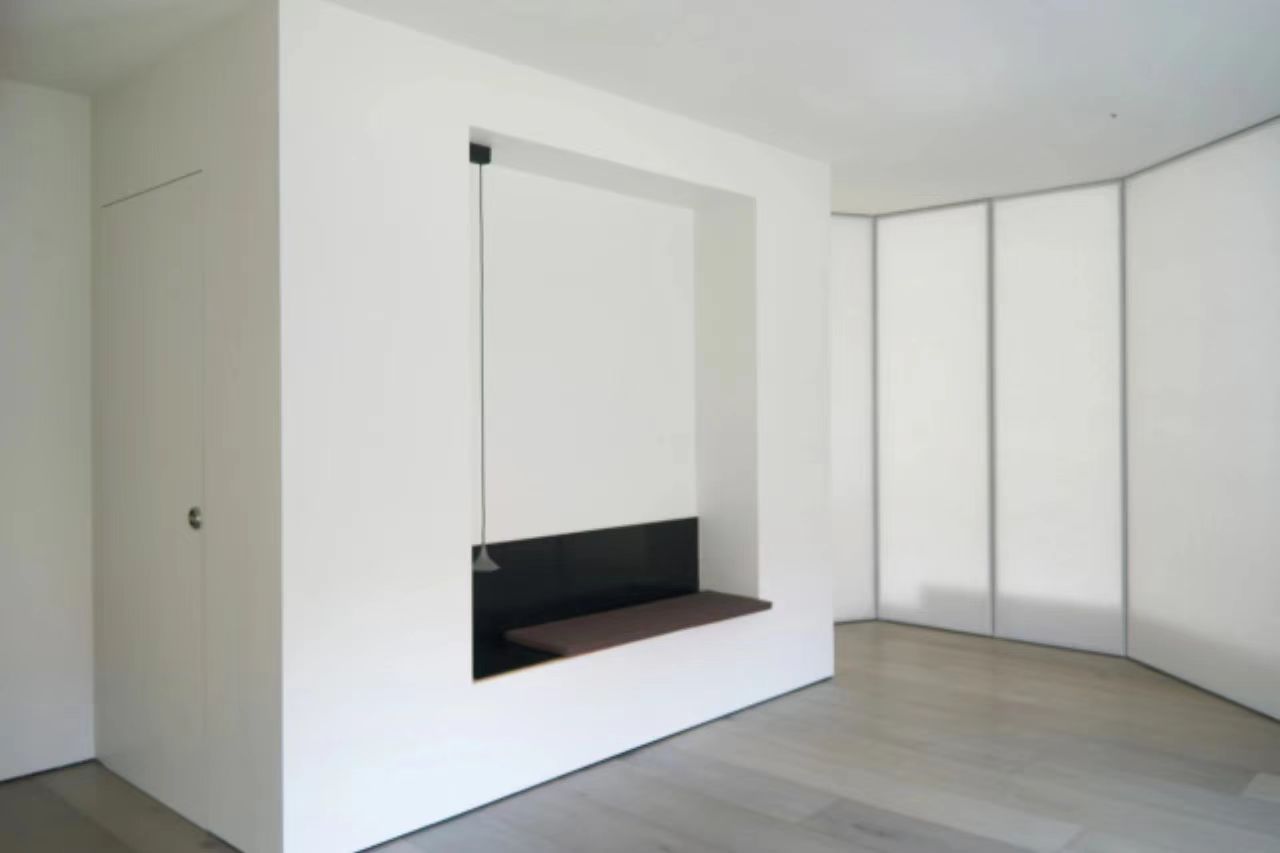

茶室至西面区域的空间状态
作为内心世界的屏风
The screen that reflects the inner world
近代的法国作家巴什拉曾把柜子比作人的内心世界,而历代中国的画师们则常把作为背景的屏风作为映照出画中主要人物内心的表现媒介,且常以“屏中屏”的形式层层递进,使得现实世界和内心世界彼此充实,彼此混淆,彼此消极。“本”空间内屏风与柜子的距离或开合方式, 因此而变得意味深长。
Modern France author Gaston Bachelard once compared the cabinet to the inner world of people, while Chinese painters of all ages have often used the screen as a background as a medium to reflect the inner life of the main characters in the painting, and this expression is often progressively in the form of "screen within the screen", so that the real space and the inner world are mixed with each other and enrich each other. In this way, the opening and closing of the screen in the "Ben" space and the distance from the cabinet become meaningful.
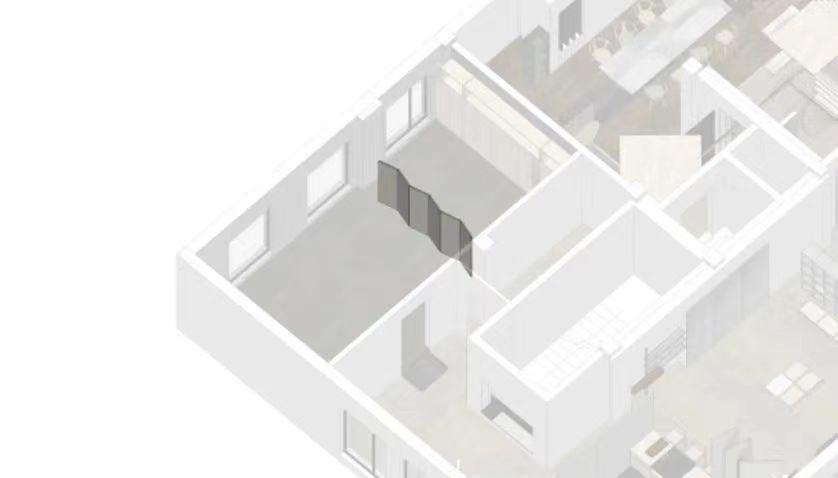
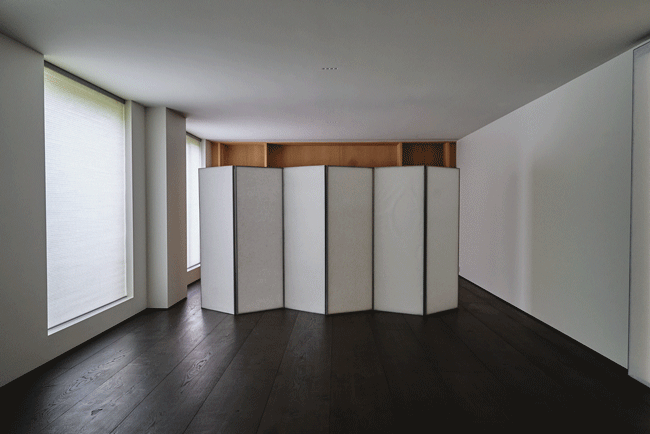
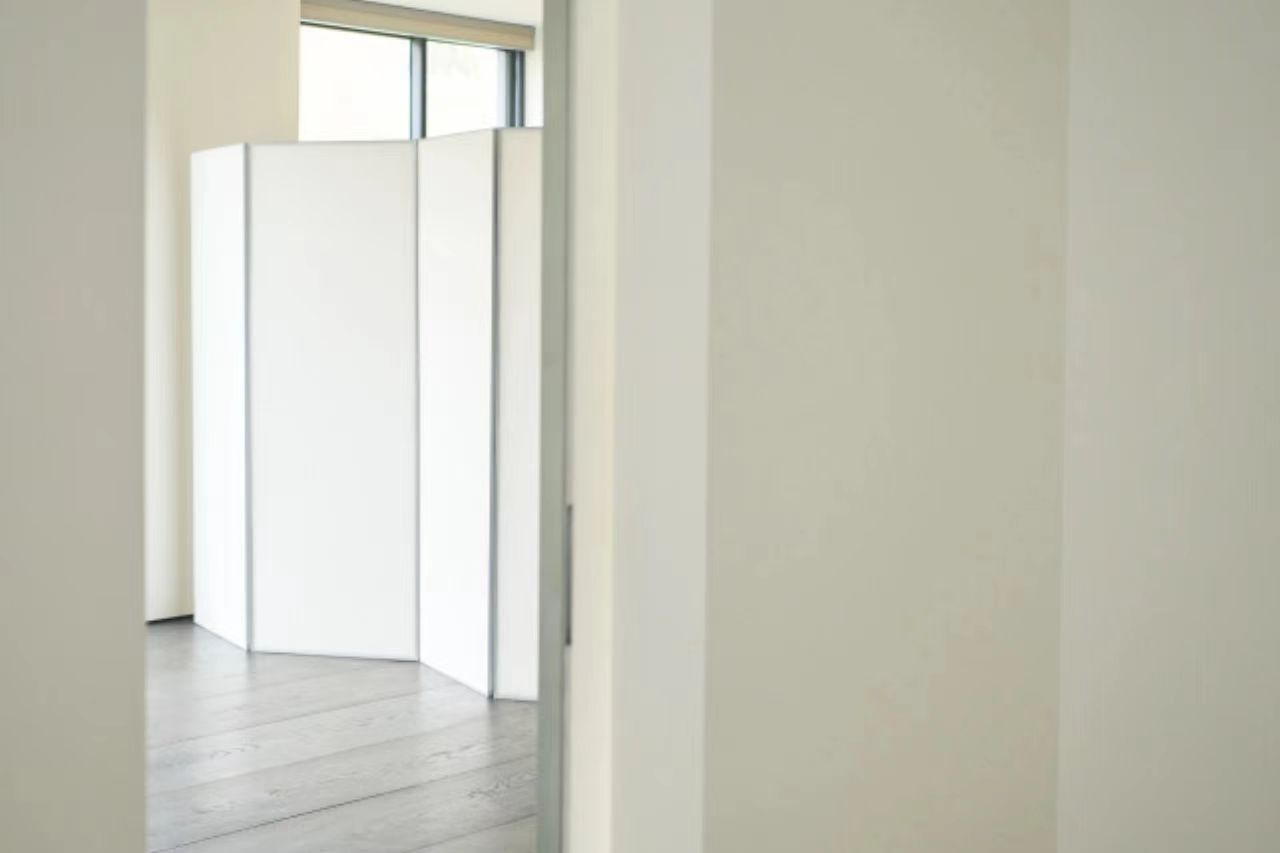
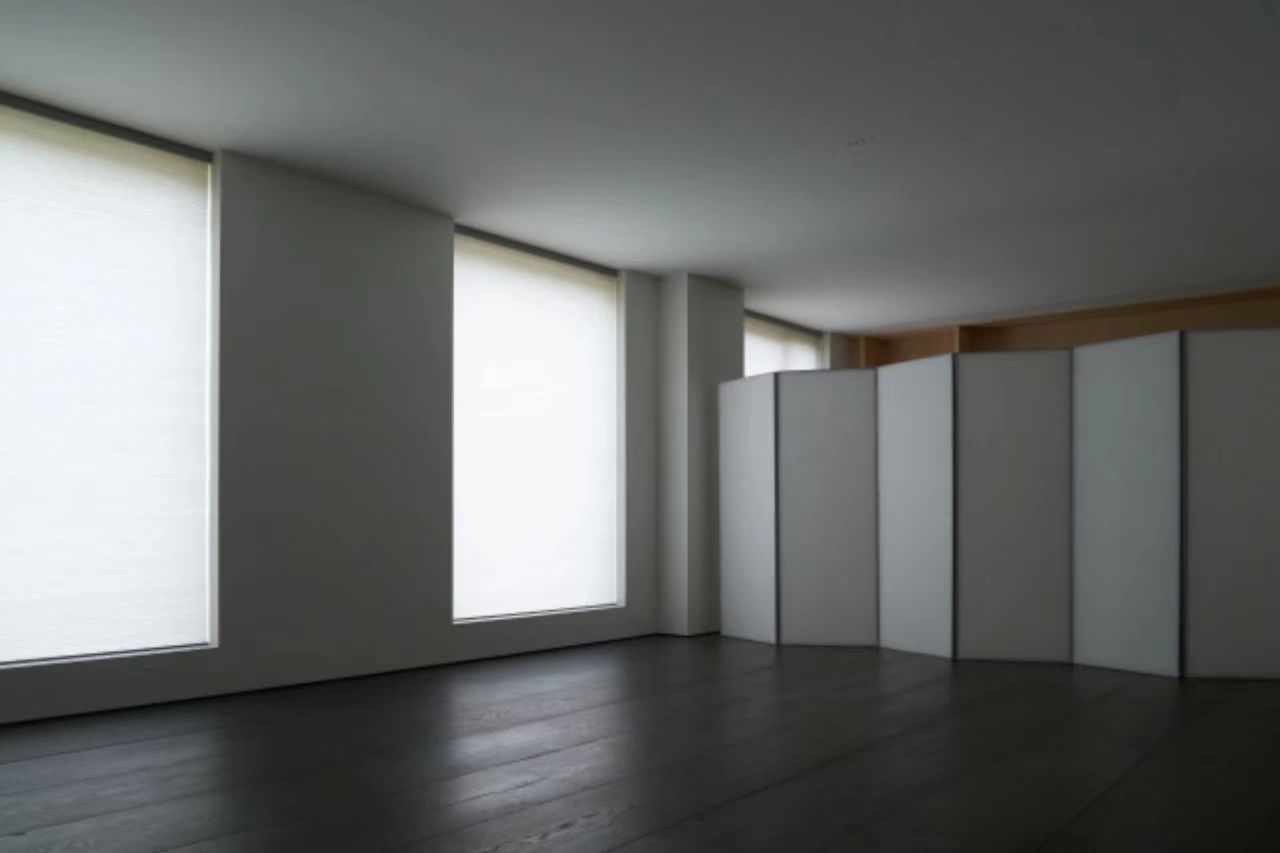
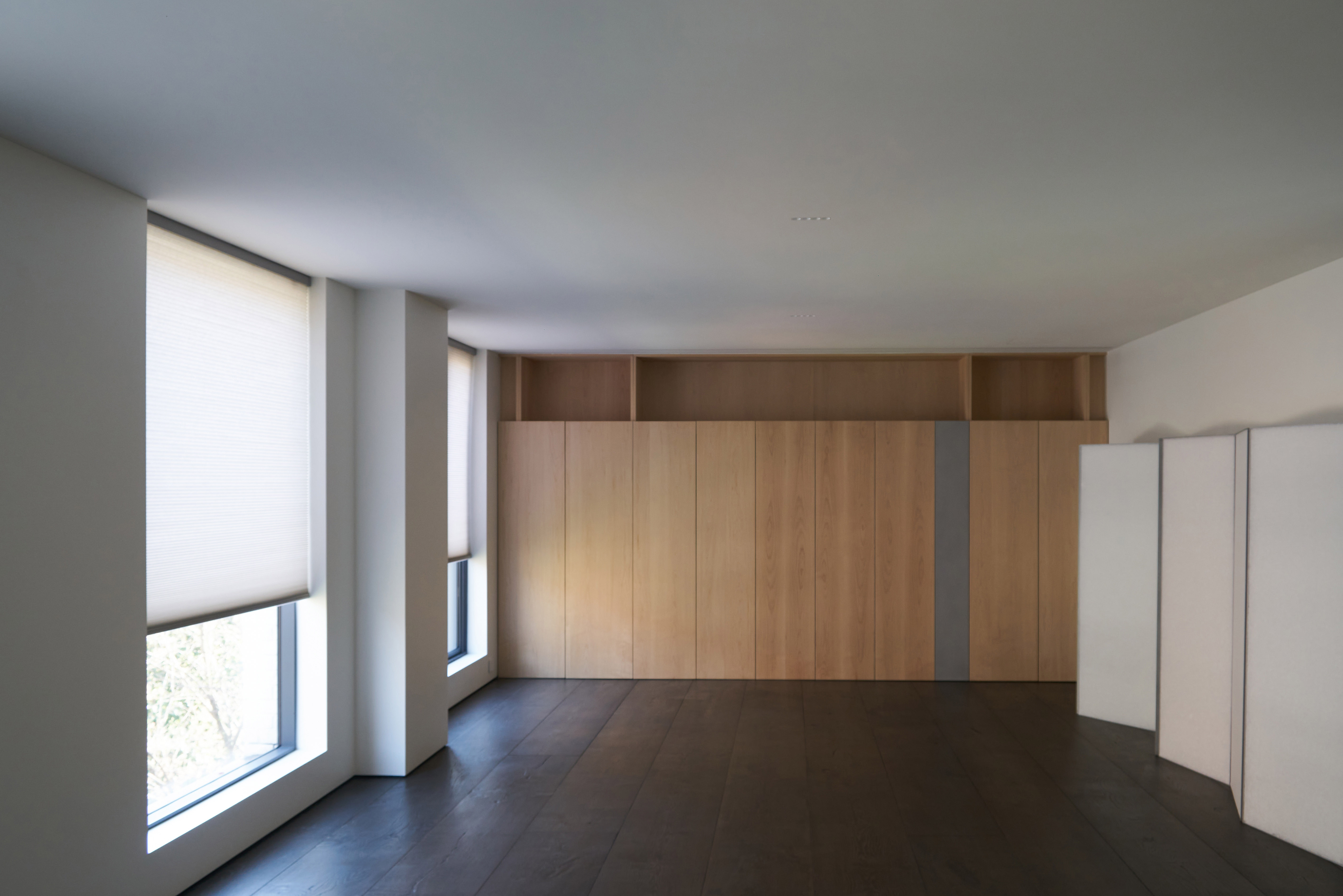
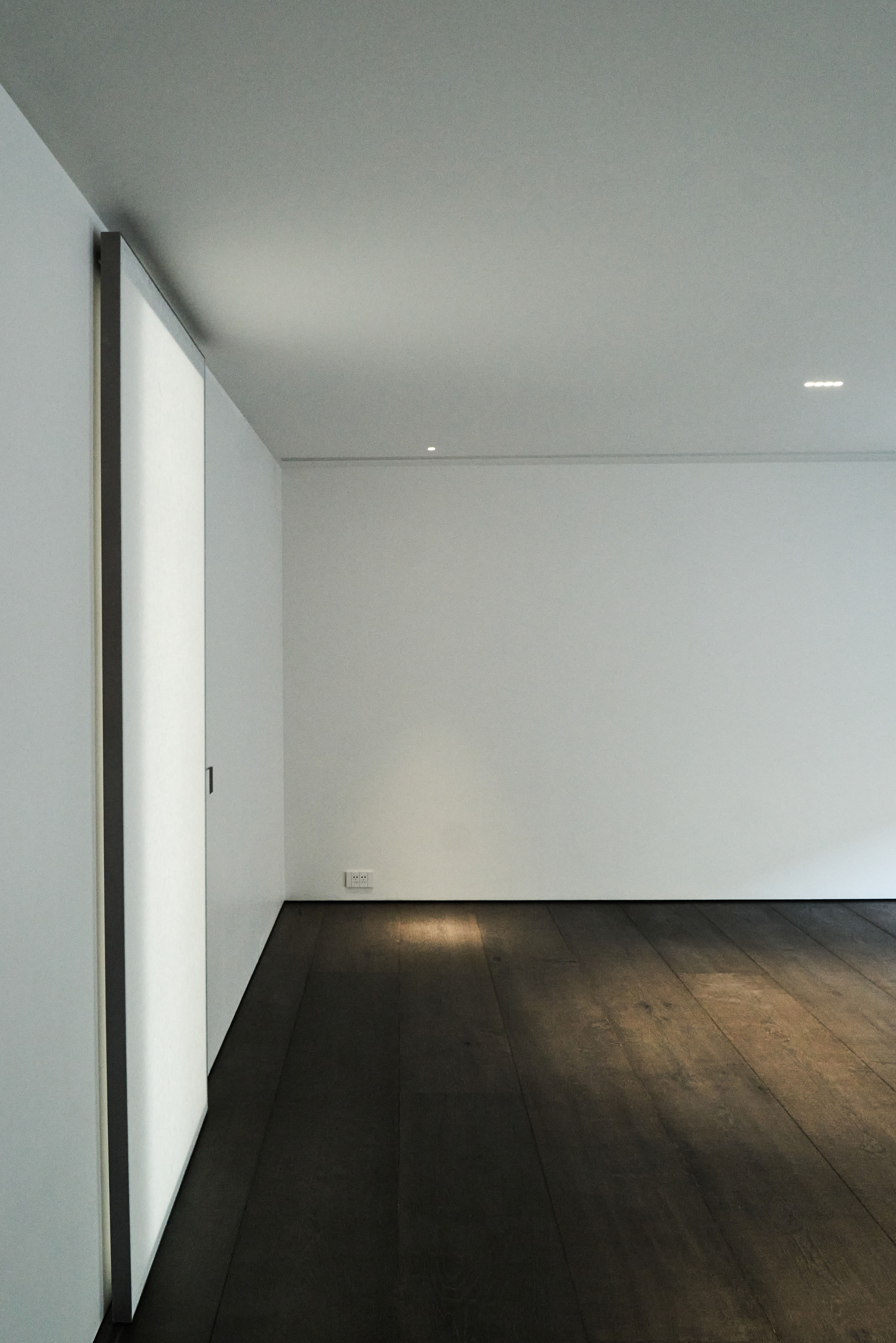

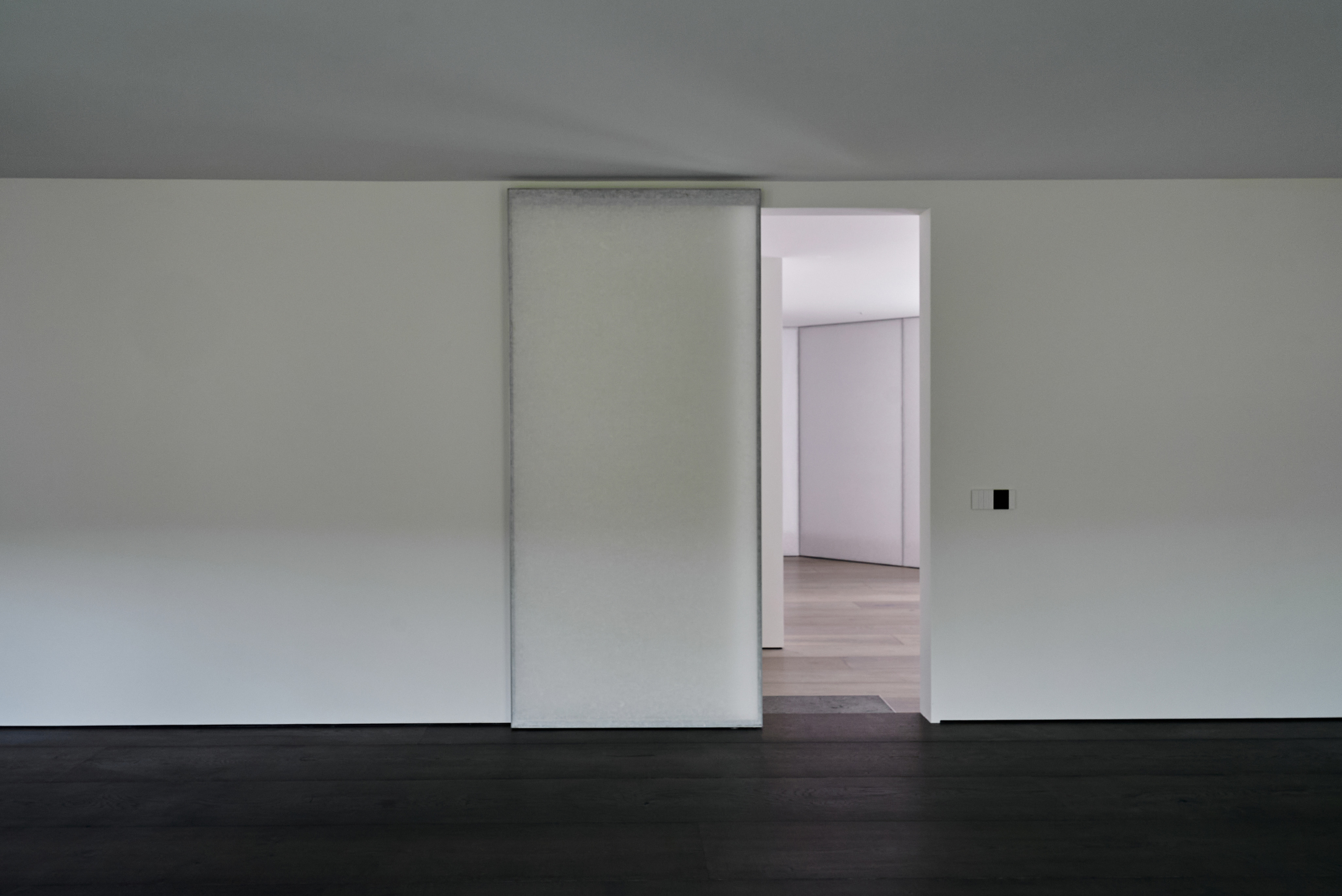
“本”空间的屏风及空间状态
此次屏风运用了古法糊纸工艺和现代材料铝及亚克力。
These screens use the traditional pasting process, as well as modern materials such as aluminum and acrylic.



屏风细节

The floor, people, space and nature between the screens
二期是一个环境型空间,主要体现地板、人、空间、自然之间的关系。
The phase 2 is an environmental space, which mainly shows the relationship between flooring, people, space and nature.
墙面大幅的窗户弱化了室内与室外的边界,让空间能够在不同的时节和外部的自然环境发生关联和交互——夏至的清明风会从东南方向穿过茶室,营造舒适的品茶接待环境;在中秋夜晚的客厅可以看到十点的满月;冬至下午太阳的光线从西面的窗户进入,并随着时间而不断变化在空间中的位置;本空间窗外则枝繁叶茂,雨季能听雨落枝头,雪季能观玉树琼枝。季节更替与时间变化之间,人在空间的不同位置都可以获得流动的自然体验。
The large windows on the walls weaken the boundary between the interior and the outside, so that the space can be connected and interacted with the natural environment at different times. The wind of the beginning of summer will pass through the tea room from the southeast, creating a comfortable hospitality environment; At ten o'clock in the night of the Mid-Autumn Festival, a full moon can be seen in the living room; On the afternoon of the winter solstice, the sun's rays enter the house through the west window and shift over time. There are many trees outside the window of the “Ben” space, and you can hear the sound of rain dripping on the leaves when it rains, and you can see the snow covering the branches in winter. With the change of seasons and time, people have different natural experiences in many parts of the space.
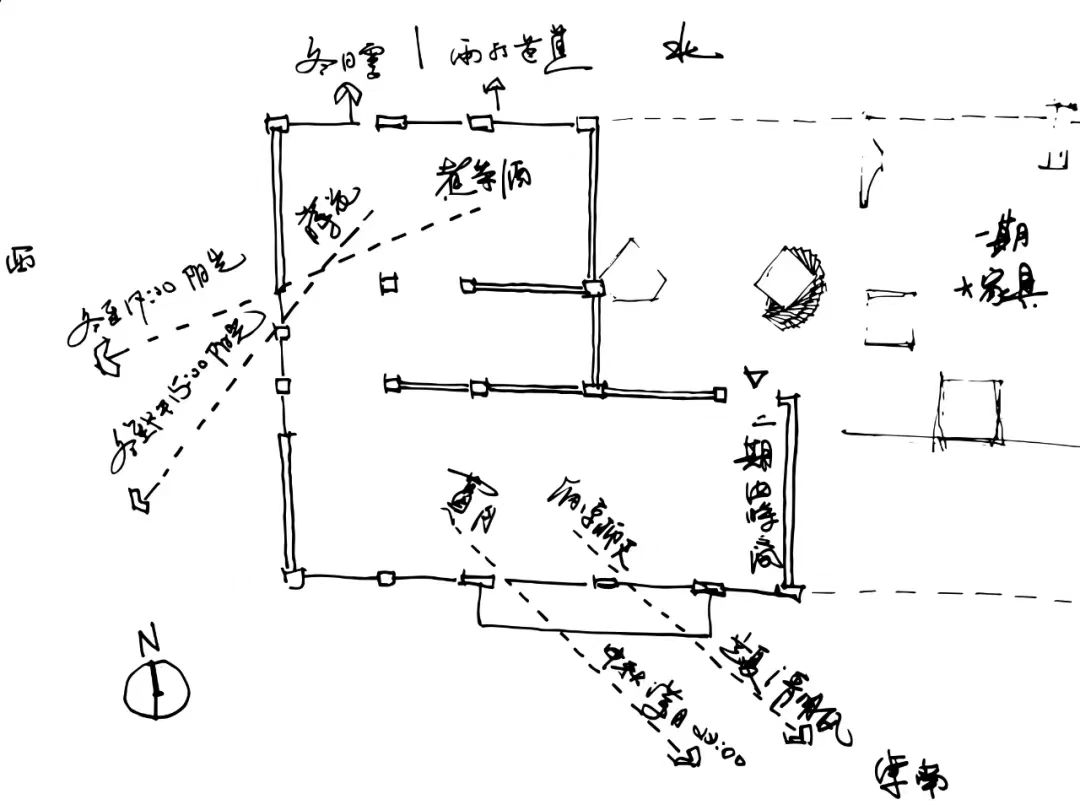
四季自然环境与空间的交互示意图
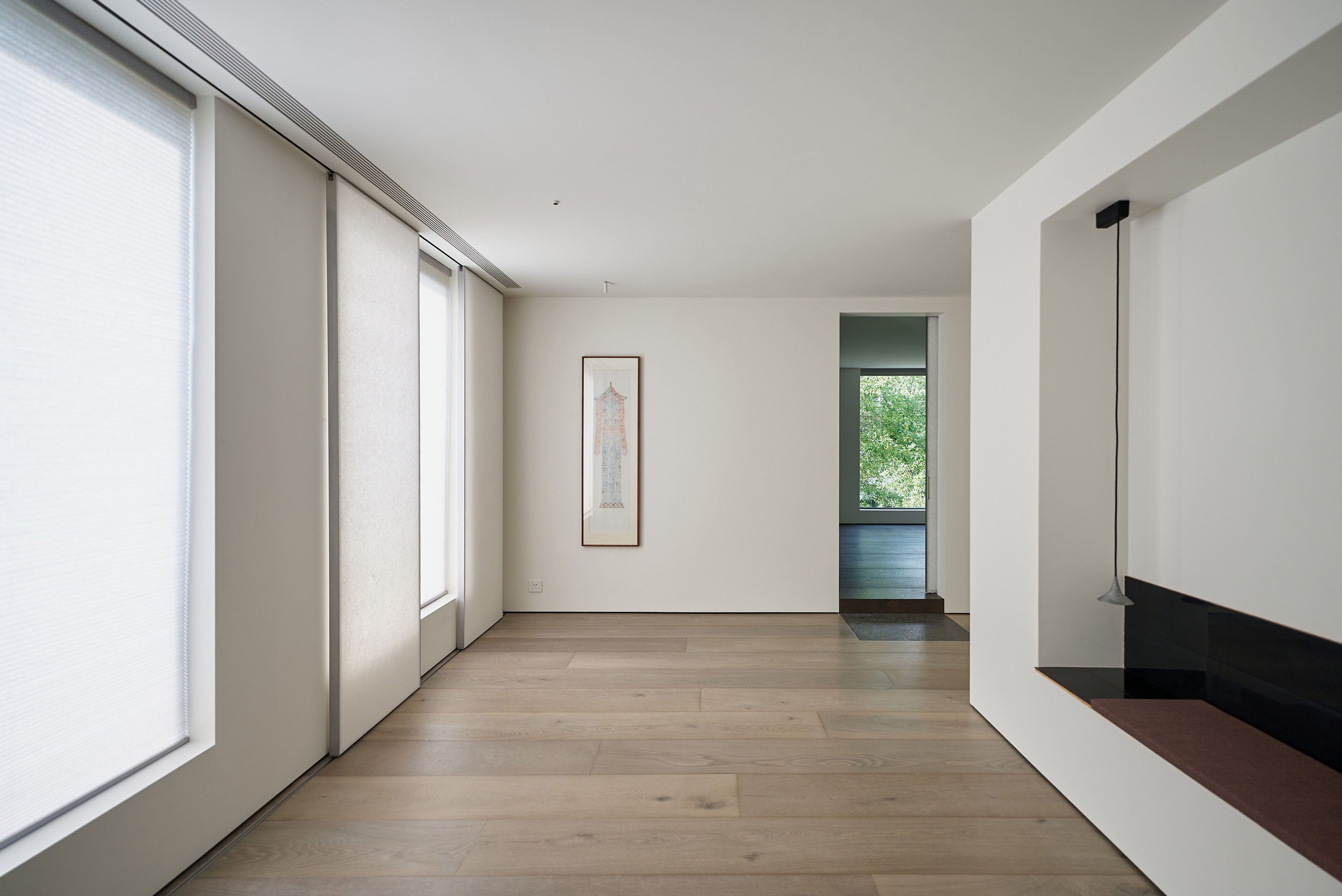
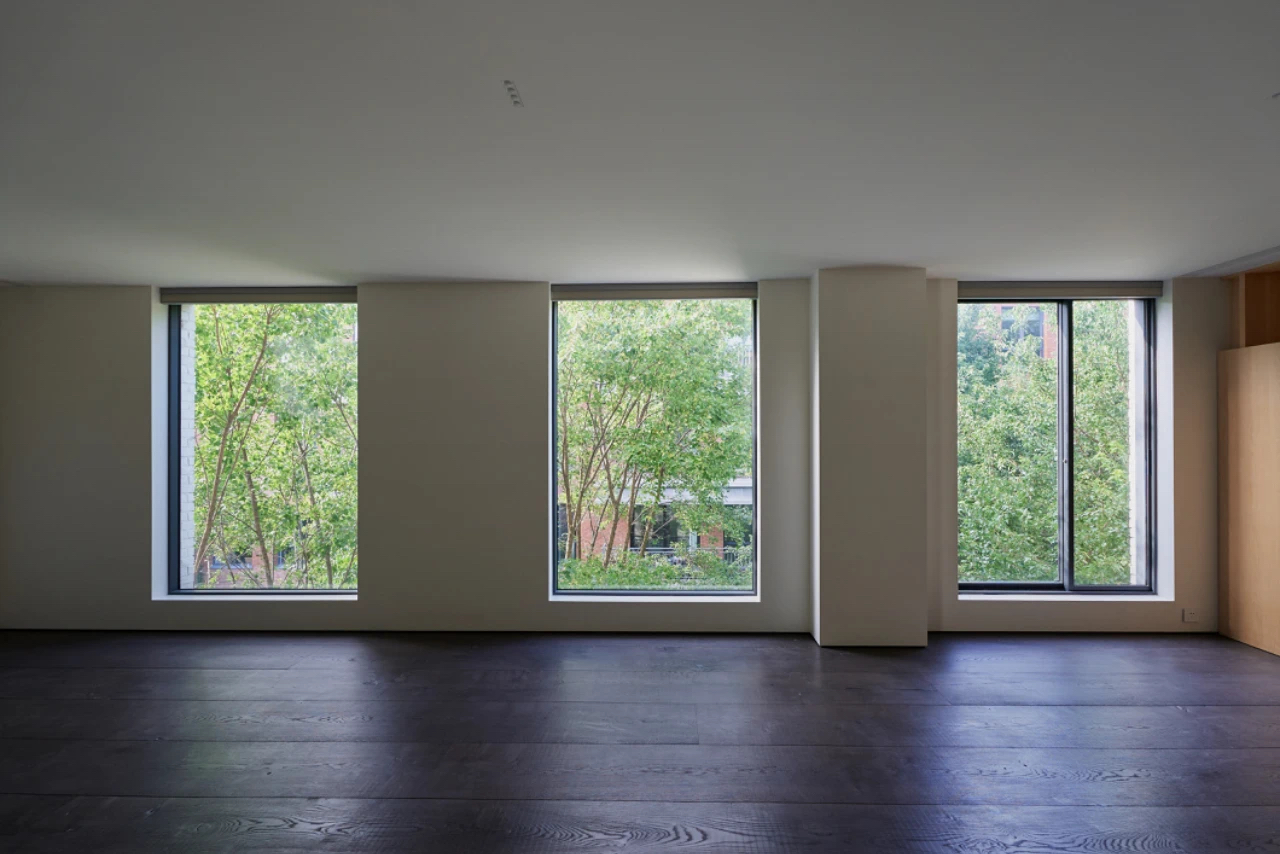


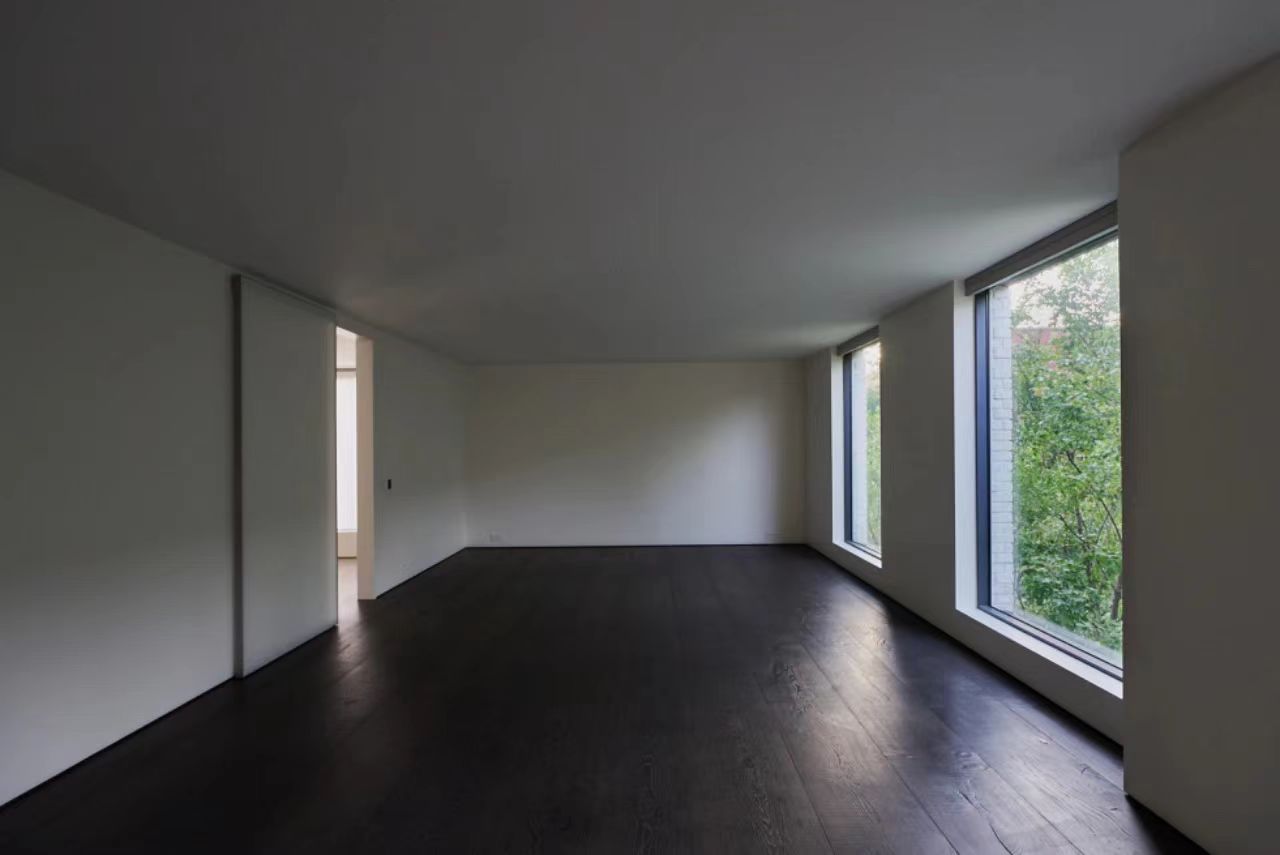
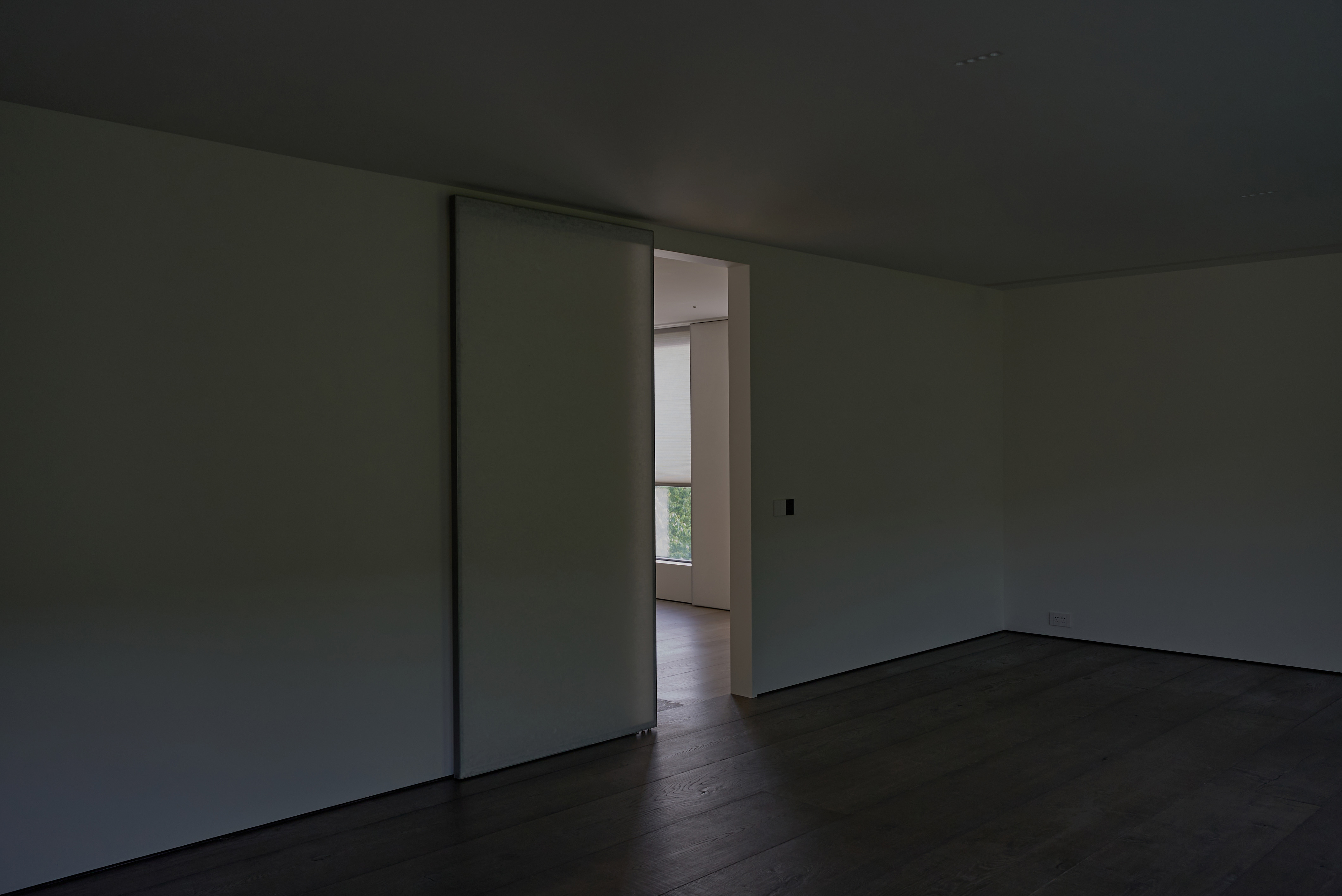
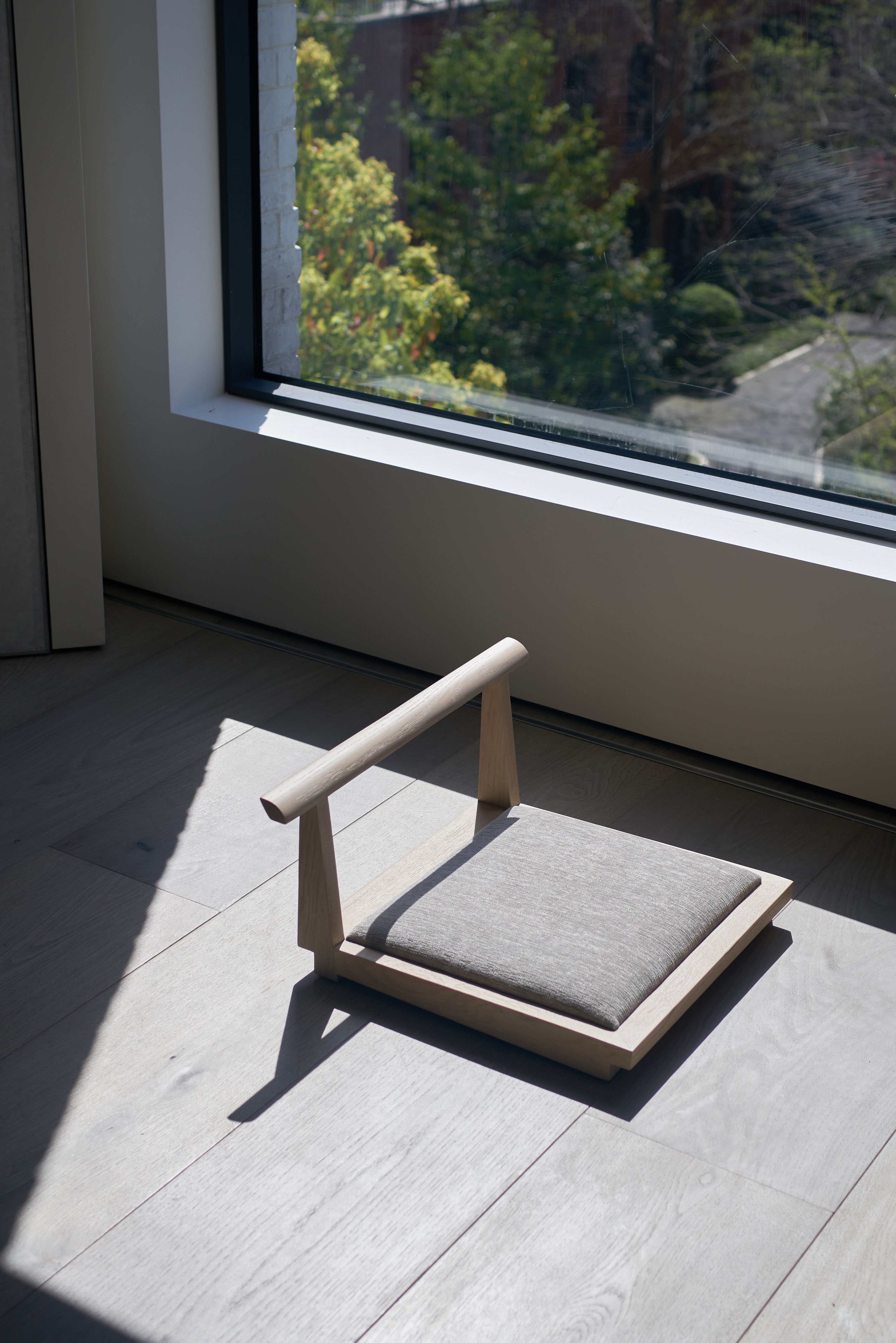



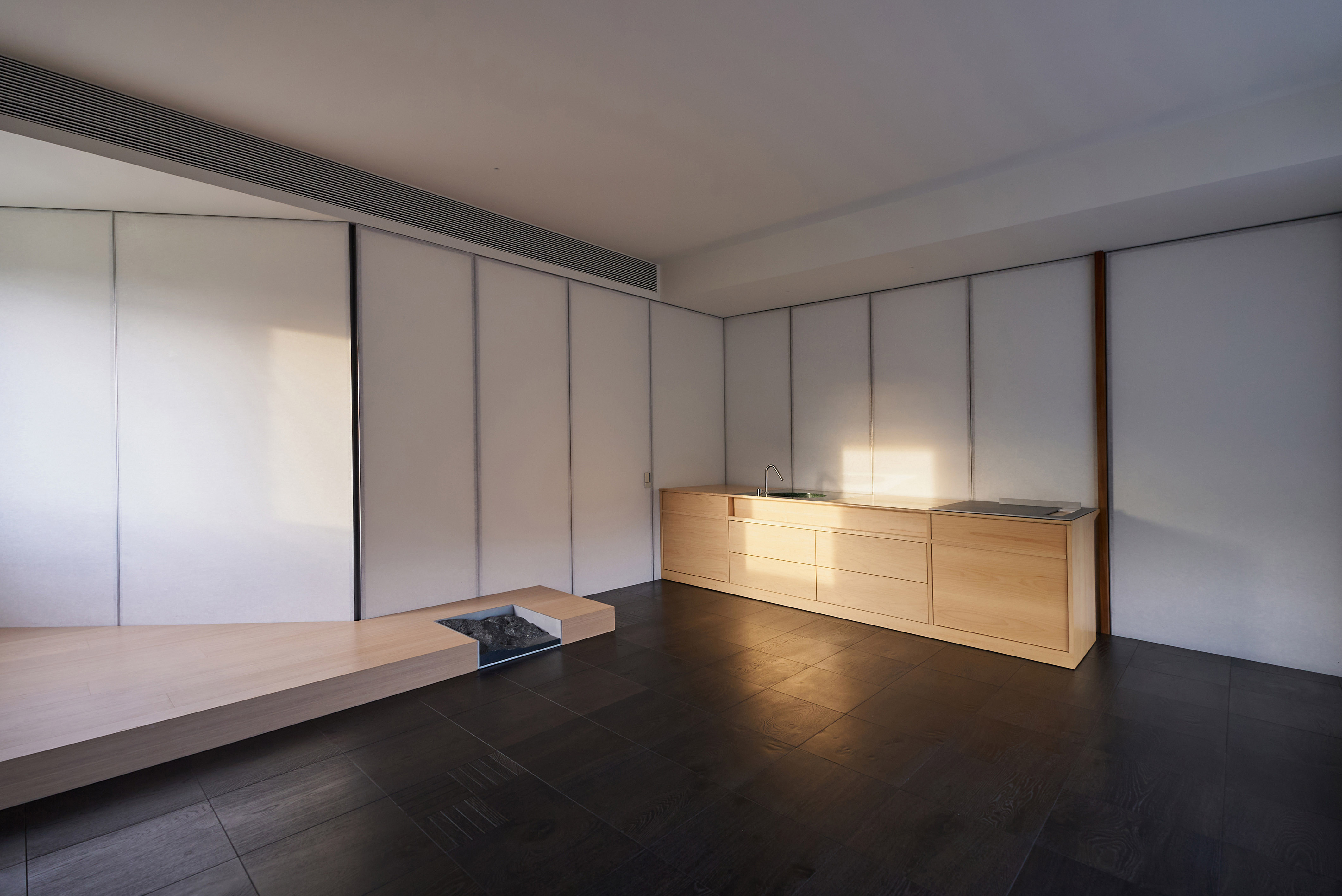
空间内外的自然与光影体验
茶室墙面的置物柜被设置为可移动的形式,左右推移可将右侧的小窗露出或遮挡起来,通过平面关系切换使用功能,强化风向或调整光线,形成灵活的视野景观;同时,与周围的屏风和上抬的地面形成多重的周边关系,增加多个感官同时运作的感受。
The tea room wall cabinet has a door that can be moved left and right, which can expose or block the small window on the right side of the cabinet. The design is to switch functions by adjusting the plane relationship, to create a flexible visual landscape by strengthening the wind direction or adjusting the light, and also to form multiple peripheral relationships with the surrounding screens and the ground, so as to create a multi-sensory effect.



大尺寸地板作为空间地面主要面积的用材,与东方建筑尺度、大漆地板等穿插搭配,显示不同场景的实用功能。
As the main material of the space floor, the Ugan concept Large-size floor is interspersed and matched with the Oriental Architectural Scale series floor and the Lacquer floor, which fits the practical functions of different scenes.
客厅地面大面积铺设感物3米浅色橡木地板,靠近窗边的地面则切分出一小块区域铺以石料和反射自然光线的感物大漆地板,通过平面节奏,呈现多种材料特性和工艺,为空间赋予多重质感。
The floor of the living room is covered with large area of light oak flooring 3 meters long, and the area near the window is divided into small pieces of large Lacquer flooring that reflects natural light, as well as some stones, so as to create a special flat rhythm and give the space a multi-texture.
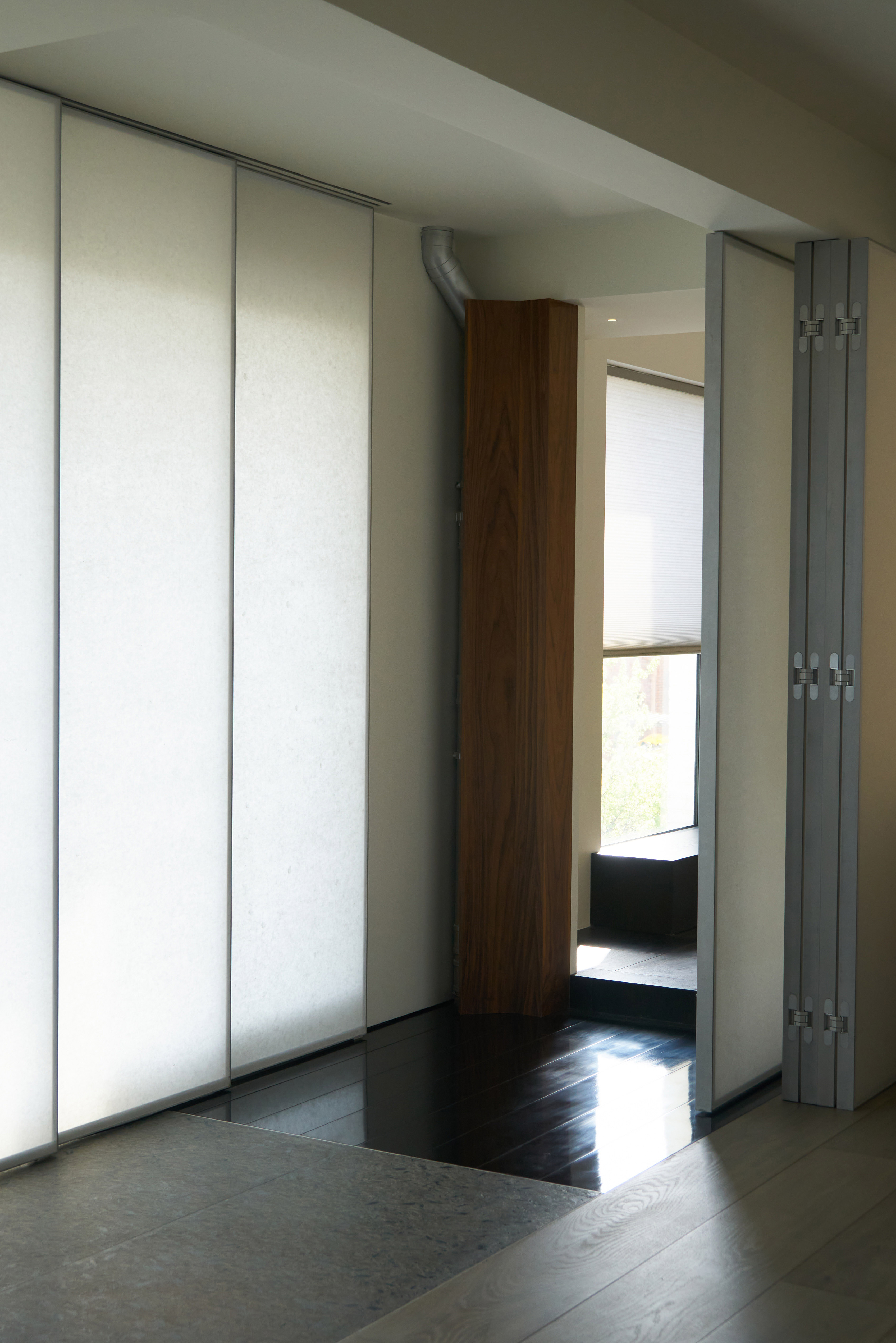
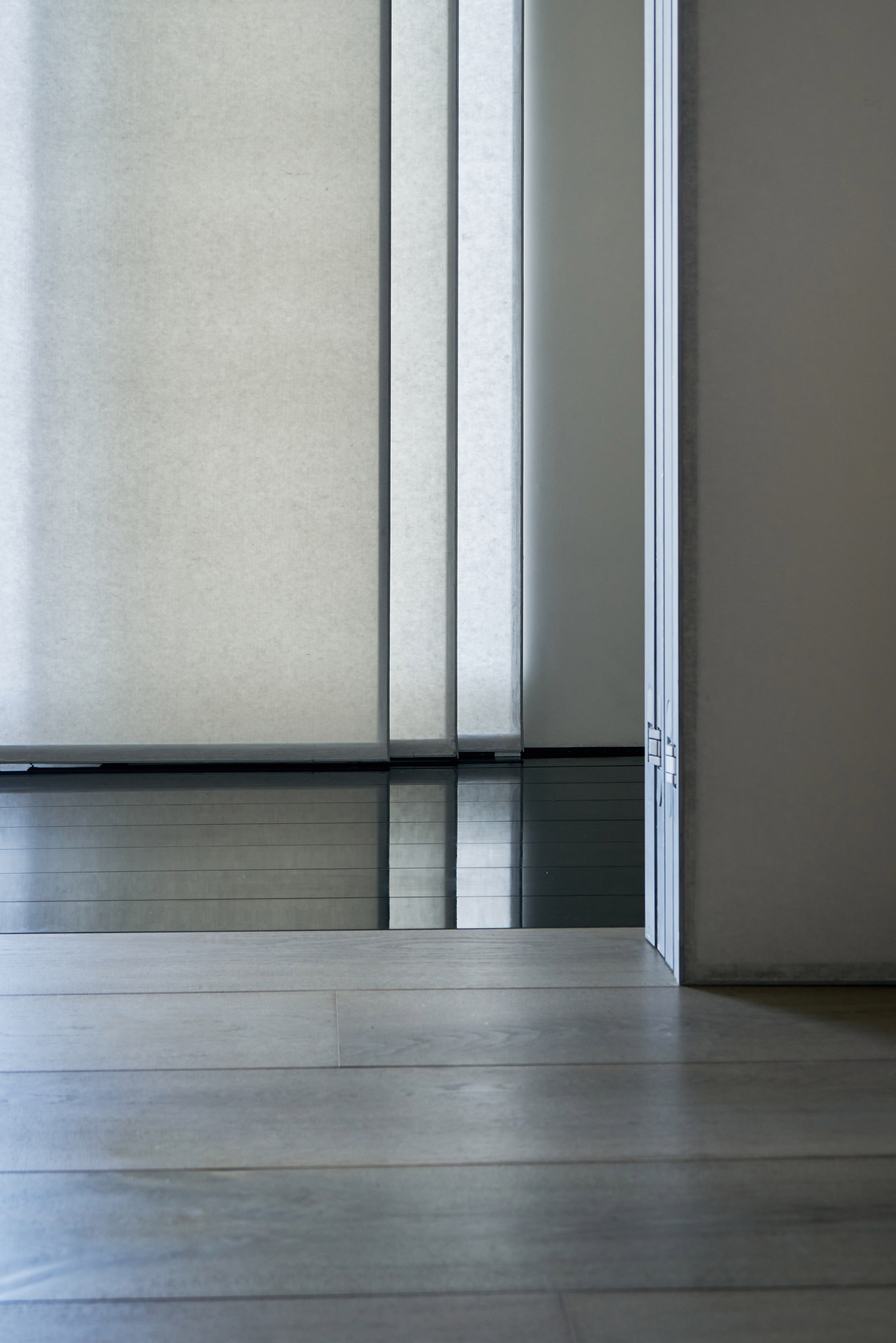
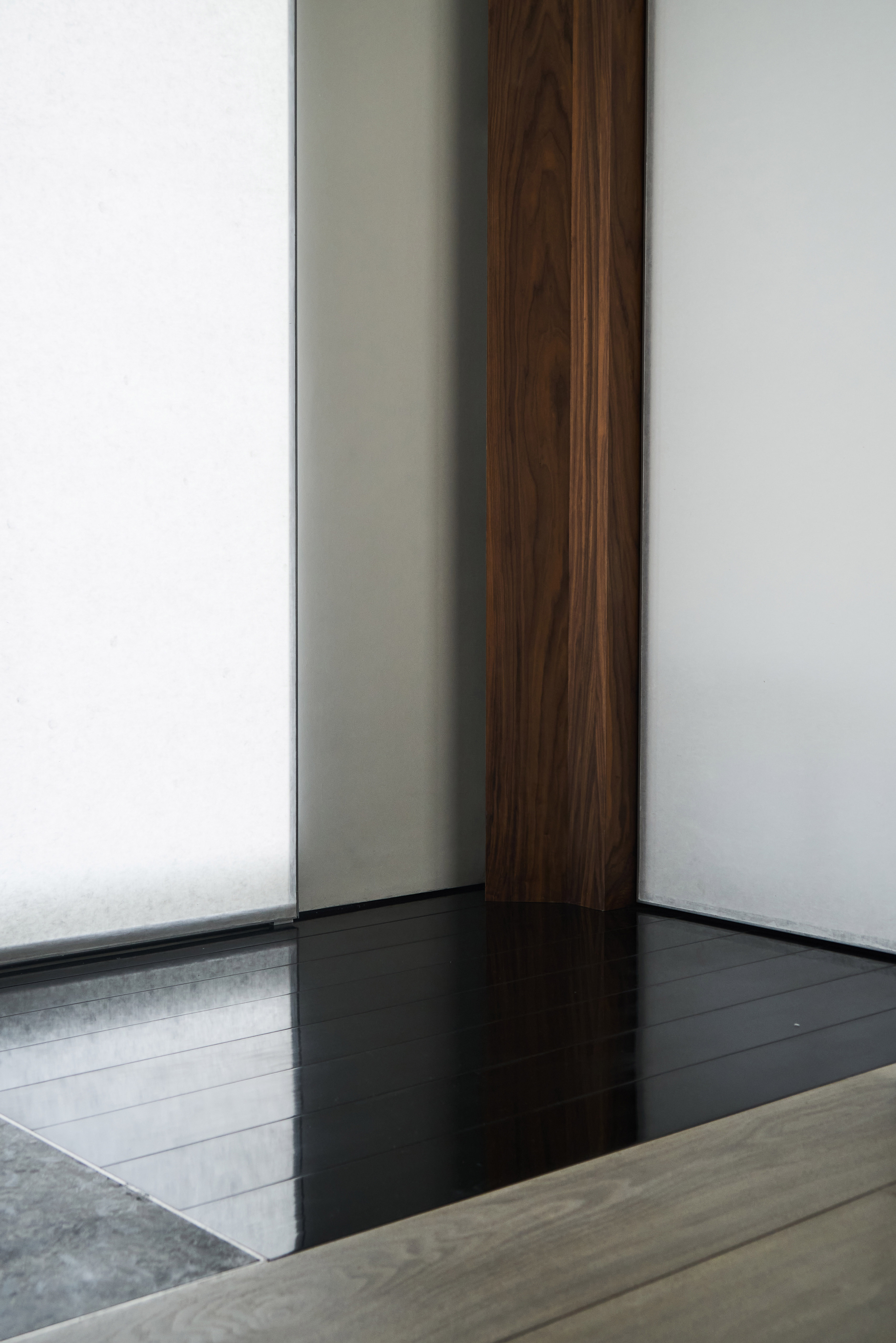

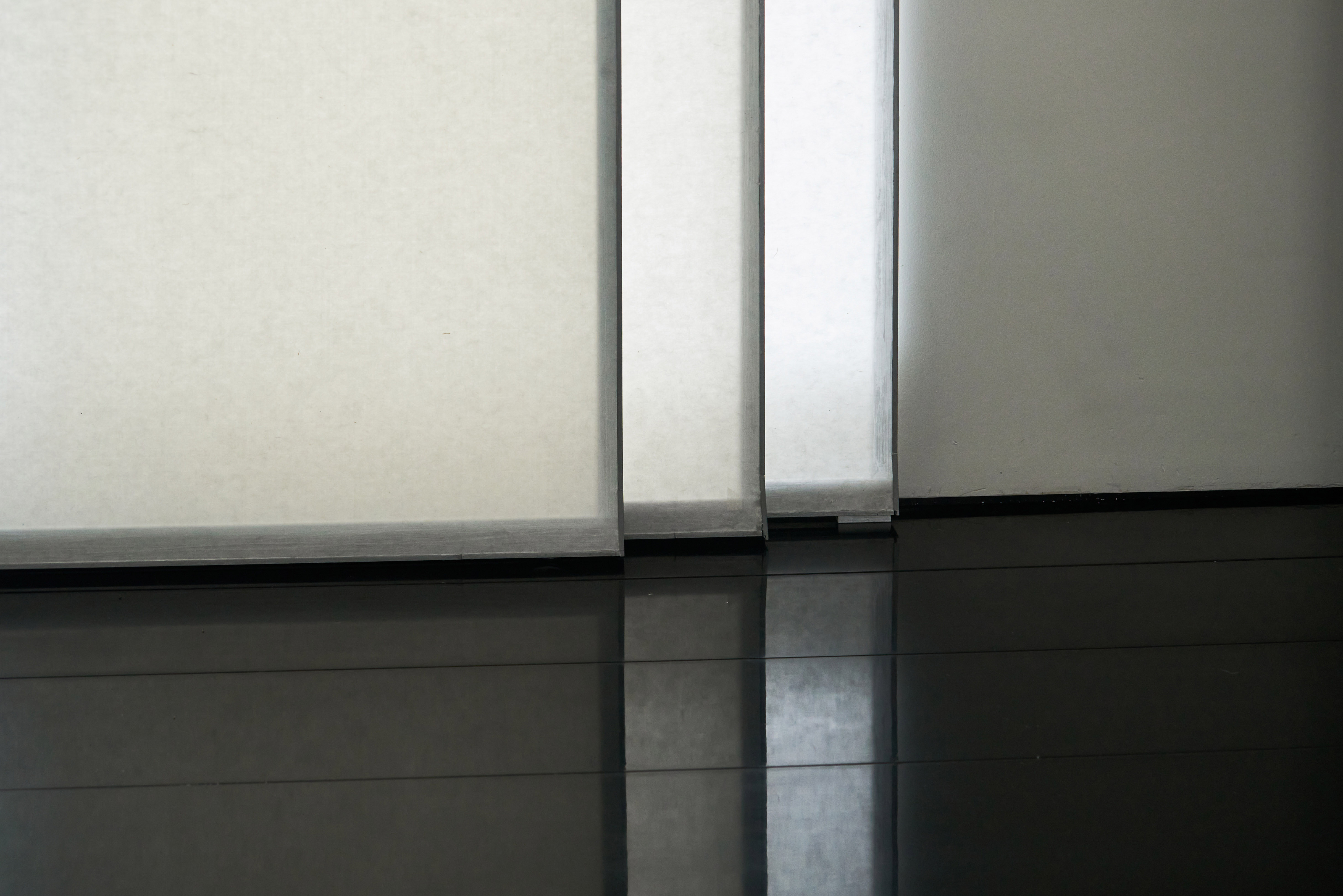
茶室搭配以感物东方建筑尺度系列地板与竹地板,与充满人文气息的场景相呼应。
The floor of the tea room is laid with the Oriental Architectural Scale floor and the Bamboo floor, echoing the traditional Chinese painting-like scene.
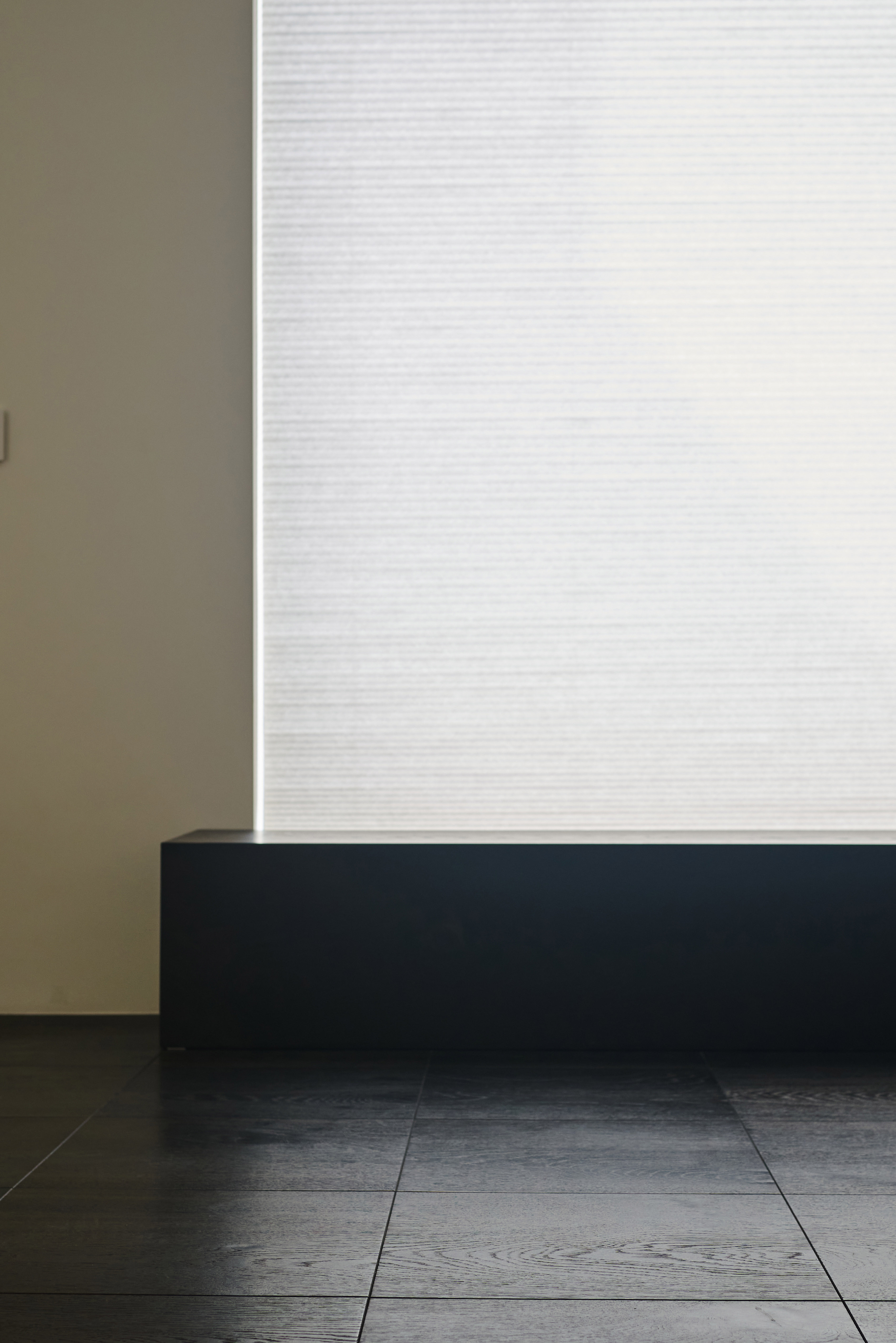


本空间地面选用5米深色橡木地板,整个空间宛如被木质肌肤所包裹。人可以脱下鞋履进入其中,近距离与木头发生连接;在其中可以闻香、点茶,或是静坐、冥想,进行向内探寻、回归本质的心灵体验。
The floor of the "Ben" space uses a 5-meter-long dark oak floor, so the whole space seems to be wrapped in wooden skin. We can take off our shoes and go into it, get in touch with the wood; It is also possible to engage in spiritual activities such as incense, tea ceremony and meditation.

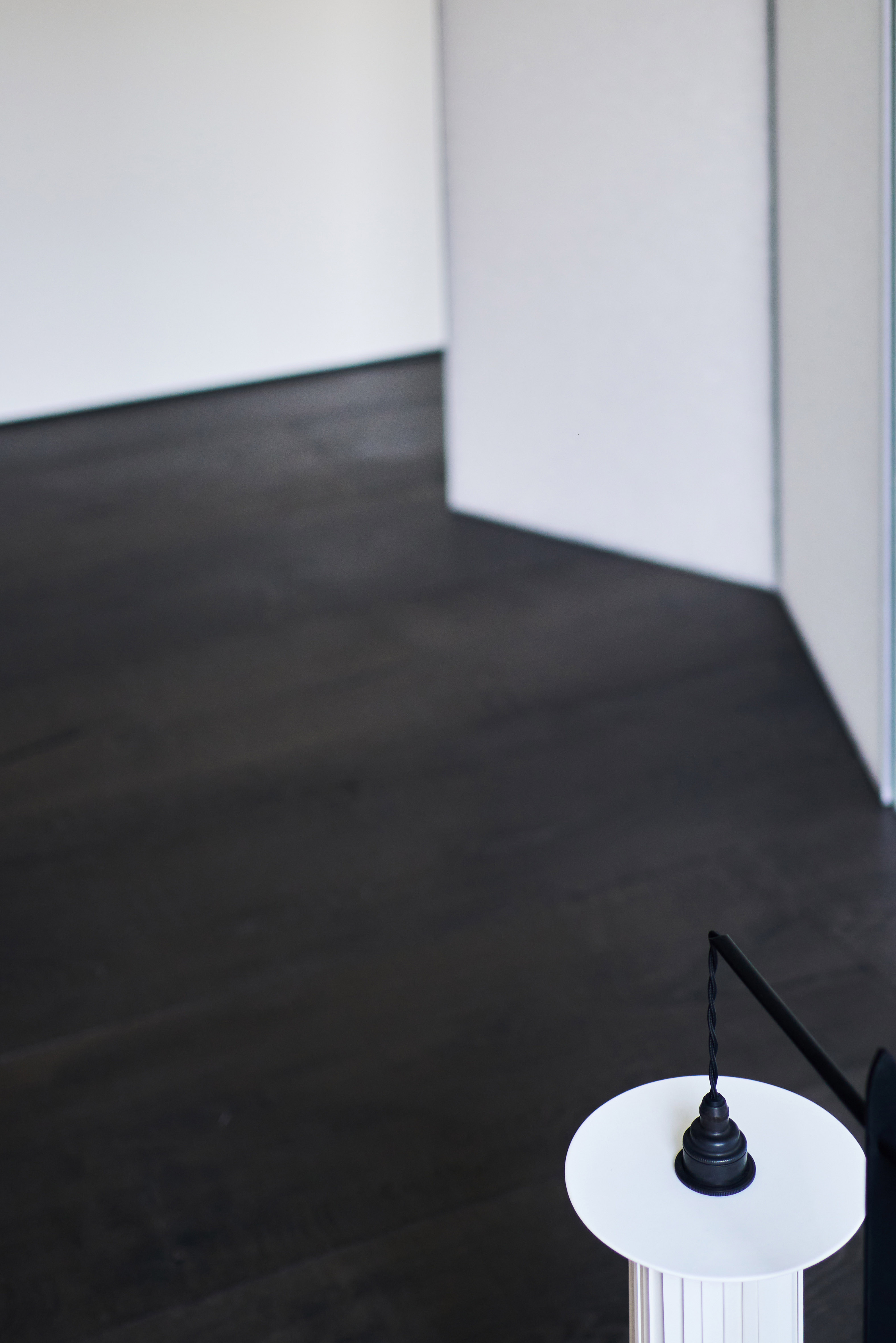
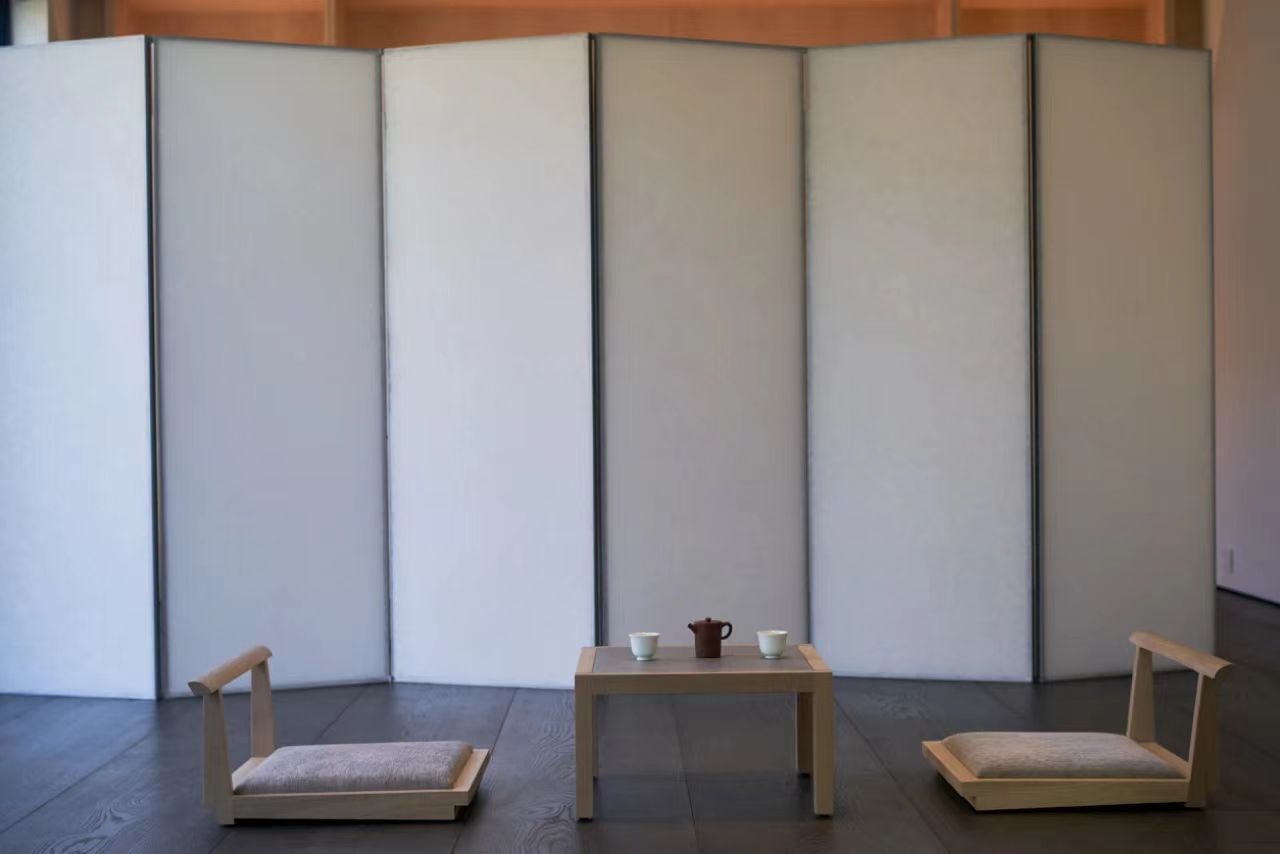


设计:DRA Architects | 将究建筑设计事务所
Space Design:DRA Architects
施工:伍匠
Constructor:Uhjoh
摄影:Vincent Kuan、王晨
Photographer:Vincent Kuan、Wang Chen
部分材料及道具:
Serax、NEMO、Artemide、&Tradition、Flos、
BTicino、CEA、Tacchini、SANCAL、Control4
Materials & Props:
Serax、NEMO、Artemide、&Tradition、Flos、
BTicino、CEA、Tacchini、SANCAL、Control4

